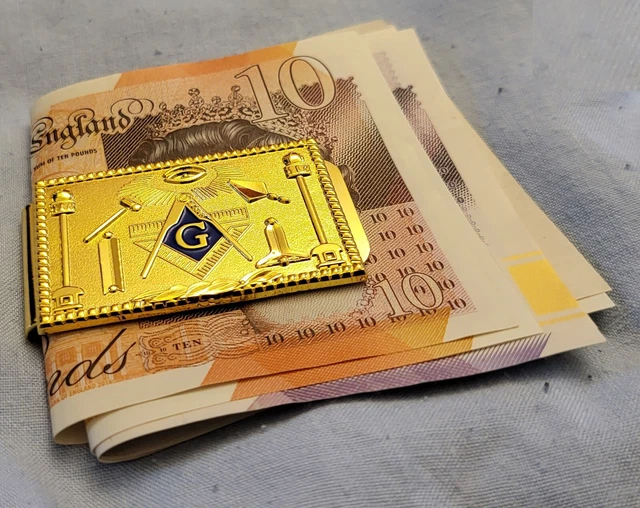Masonic Gold Money Clip Cash Mason Old Temple Hammer British Unknown Symbols USA
$17.15 Buy It Now or Best Offer, $10.28 Shipping, 30-Day Returns, eBay Money Back Guarantee
Seller: checkoutmyunqiuefunitems ✉️ (3,880) 99.9%,
Location: Manchester, Take a look at my other items, GB,
Ships to: WORLDWIDE,
Item: 276366688808
Masonic Gold Money Clip Cash Mason Old Temple Hammer British Unknown Symbols USA. Masonic Money Clip This Gold Plated Masonic Money Clip Obviously the bank notes are not included just the clip It has Many Masonic Symbols In Excellent Condition The dimensions are 50mm x 30mm and 5mm thick and it weighs about an ounce Next time you pull your wad out show the world your a mason I have a lot of Masonic items on Ebay so Please CLICK HERE TO VISIT MY SHOP
Bid with Confidence - Check My Almost 100% Positive Feedback from over 3,000 Satisfied Customers I have over 10 years of Ebay Selling Experience - So Why Not Treat Yourself? I have got married recently and need to raise funds to meet the costs also we are planning to move into a house together I always combined postage on multiple items So please Click Here to Check out my other items Instant Feedback Automatically Left Immediately after Receiving Payment All Items Sent out within 24 hours of Receiving Payment.
Overseas Bidders Please Note Surface Mail Delivery Times >
Europe takes up to 2 weeks, but longer if held up at customs
Outside Europe up to 3 weeks, but longer if held up at customs
Also if bidding from overseas and you want your item tracked please select the International Signed for Postage Option For that Interesting Conversational Piece, A Birthday Present, Christmas Gift, A Comical Item to Cheer Someone Up or That Unique Perfect Gift for the Person Who has Everything.. or a special gift just to say Thank You. You now know where to look for a bargain!If You Have any Questions Please Message me thru ebay and I Will Reply ASAP
XXXX - DO NOT CLICK HERE - XXXX
Click Here to Add me to Your List of Favourite Sellers
"A Thing of Beauty is a Joy for ever"
So go ahead and treat yourself! With my free returns there is no risk
Thanks for Looking and Best of Luck with the Bidding!!
If You Have any Questions Please Message me through ebay and I Will Reply ASAP
I have sold items to coutries such as Afghanistan
* Albania * Algeria * American Samoa (US) * Andorra * Angola * Anguilla
(GB) * Antigua and Barbuda * Argentina * Armenia * Aruba (NL) *
Australia * Austria * Azerbaijan * Bahamas * Bahrain * Bangladesh *
Barbados * Belarus * Belgium * Belize * Benin * Bermuda (GB) * Bhutan *
Bolivia * Bonaire (NL) * Bosnia and Herzegovina * Botswana * Bouvet
Island (NO) * Brazil * British Indian Ocean Territory (GB) * British
Virgin Islands (GB) * Brunei * Bulgaria * Burkina Faso * Burundi *
Cambodia * Cameroon * Canada * Cape Verde * Cayman Islands (GB) *
Central African Republic * Chad * Chile * China * Christmas Island (AU) *
Cocos Islands (AU) * Colombia * Comoros * Congo * Democratic Republic
of the Congo * Cook Islands (NZ) * Coral Sea Islands Territory (AU) *
Costa Rica * Croatia * Cuba * Curaçao (NL) * Cyprus * Czech Republic *
Denmark * Djibouti * Dominica * Dominican Republic * East Timor *
Ecuador * Egypt * El Salvador * Equatorial Guinea * Eritrea * Estonia *
Ethiopia * Falkland Islands (GB) * Faroe Islands (DK) * Fiji Islands *
Finland * France * French Guiana (FR) * French Polynesia (FR) * French
Southern Lands (FR) * Gabon * Gambia * Georgia * Germany * Ghana *
Gibraltar (GB) * Greece * Greenland (DK) * Grenada * Guadeloupe (FR) *
Guam (US) * Guatemala * Guernsey (GB) * Guinea * Guinea-Bissau * Guyana *
Haiti * Heard and McDonald Islands (AU) * Honduras * Hong Kong (CN) *
Hungary * Iceland * India * Indonesia * Iran * Iraq * Ireland * Isle of
Man (GB) * Israel * Italy * Ivory Coast * Jamaica * Jan Mayen (NO) *
Japan * Jersey (GB) * Jordan * Kazakhstan * Kenya * Kiribati * Kosovo *
Kuwait * Kyrgyzstan * Laos * Latvia * Lebanon * Lesotho * Liberia *
Libya * Liechtenstein * Lithuania * Luxembourg * Macau (CN) * Macedonia *
Madagascar * Malawi * Malaysia * Maldives * Mali * Malta * Marshall
Islands * Martinique (FR) * Mauritania * Mauritius * Mayotte (FR) *
Mexico * Micronesia * Moldova * Monaco * Mongolia * Montenegro *
Montserrat (GB) * Morocco * Mozambique * Myanmar * Namibia * Nauru *
Navassa (US) * Nepal * Netherlands * New Caledonia (FR) * New Zealand *
Nicaragua * Niger * Nigeria * Niue (NZ) * Norfolk Island (AU) * North
Korea * Northern Cyprus * Northern Mariana Islands (US) * Norway * Oman *
Pakistan * Palau * Palestinian Authority * Panama * Papua New Guinea *
Paraguay * Peru * Philippines * Pitcairn Island (GB) * Poland * Portugal
* Puerto Rico (US) * Qatar * Reunion (FR) * Romania * Russia * Rwanda *
Saba (NL) * Saint Barthelemy (FR) * Saint Helena (GB) * Saint Kitts
and Nevis * Saint Lucia * Saint Martin (FR) * Saint Pierre and Miquelon
(FR) * Saint Vincent and the Grenadines * Samoa * San Marino * Sao Tome
and Principe * Saudi Arabia * Senegal * Serbia * Seychelles * Sierra
Leone * Singapore * Sint Eustatius (NL) * Sint Maarten (NL) * Slovakia
* Slovenia * Solomon Islands * Somalia * South Africa * South Georgia
(GB) * South Korea * South Sudan * Spain * Sri Lanka * Sudan * Suriname *
Svalbard (NO) * Swaziland * Sweden * Switzerland * Syria * Taiwan *
Tajikistan * Tanzania * Thailand * Togo * Tokelau (NZ) * Tonga *
Trinidad and Tobago * Tunisia * Turkey * Turkmenistan * Turks and Caicos
Islands (GB) * Tuvalu * U.S. Minor Pacific Islands (US) * U.S. Virgin
Islands (US) * Uganda * Ukraine * United Arab Emirates * United Kingdom *
United States * Uruguay * Uzbekistan * Vanuatu * Vatican City *
Venezuela * Vietnam * Wallis and Futuna (FR) * Yemen * Zambia * Zimbabwe
and major cities such as Tokyo, Yokohama, New York City, Sao Paulo,
Seoul, Mexico City, Osaka, Kobe, Kyoto, Manila, Mumbai, Delhi, Jakarta,
Lagos, Kolkata, Cairo, Los Angeles, Buenos Aires, Rio de Janeiro,
Moscow, Shanghai, Karachi, Paris, Istanbul, Nagoya, Beijing, Chicago,
London, Shenzhen, Essen, Düsseldorf, Tehran, Bogota, Lima, Bangkok,
Johannesburg, East Rand, Chennai, Taipei, Baghdad, Santiago, Bangalore,
Hyderabad, St Petersburg, Philadelphia, Lahore, Kinshasa, Miami, Ho Chi
Minh City, Madrid, Tianjin, Kuala Lumpur, Toronto, Milan, Shenyang,
Dallas, Fort Worth, Boston, Belo Horizonte, Khartoum, Riyadh, Singapore,
Washington, Detroit, Barcelona,, Houston, Athens, Berlin, Sydney,
Atlanta, Guadalajara, San Francisco, Oakland, Montreal, Monterey,
Melbourne, Ankara, Recife, Phoenix/Mesa, Durban, Porto Alegre, Dalian,
Jeddah, Seattle, Cape Town, San Diego, Fortaleza, Curitiba, Rome,
Naples, Minneapolis, St. Paul, Tel Aviv, Birmingham, Frankfurt, Lisbon,
Manchester, San Juan, Katowice, Tashkent, Fukuoka, Baku, Sumqayit, St.
Louis, Baltimore, Sapporo, Tampa, St. Petersburg, Taichung, Warsaw,
Denver, Cologne, Bonn, Hamburg, Dubai, Pretoria, Vancouver, Beirut,
Budapest, Cleveland, Pittsburgh, Campinas, Harare, Brasilia, Kuwait,
Munich, Portland, Brussels, Vienna, San Jose, Damman , Copenhagen,
Brisbane, Riverside, San Bernardino, Cincinnati and Accra Freemasonry or Masonry consists of fraternal organisations that trace their origins to the local fraternities of stonemasons, which from the end of the fourteenth century regulated the qualifications of stonemasons and their interaction with authorities and clients. The degrees of freemasonry retain the three grades of medieval craft guilds, those of Apprentice, Journeyman or fellow (now called Fellowcraft), and Master Mason. These are the degrees offered by Craft (or Blue Lodge) Freemasonry. Members of these organisations are known as Freemasons or Masons. There are additional degrees, which vary with locality and jurisdiction, and are usually administered by different bodies than the craft degrees. The basic, local organisational unit of Freemasonry is the Lodge. The Lodges are usually supervised and governed at the regional level (usually coterminous with either a state, province, or national border) by a Grand Lodge or Grand Orient. There is no international, world-wide Grand Lodge that supervises all of Freemasonry; each Grand Lodge is independent, and they do not necessarily recognise each other as being legitimate. Modern Freemasonry broadly consists of two main recognition groups. Regular Freemasonry insists that a volume of scripture is open in a working lodge, that every member profess belief in a Deity, that no women are admitted, and that the discussion of religion and politics is banned. Continental Freemasonry is now the general term for the "liberal" jurisdictions who have removed some, or all, of these restrictions. Freemasonry describes itself as a "'beautiful system of morality, veiled in allegory and illustrated by symbols".[33] The symbolism is mainly, but not exclusively, drawn from the manual tools of stonemasons – the square and compasses, the level and plumb rule, the trowel, among others. A moral lesson is attached to each of these tools, although the assignment is by no means consistent. The meaning of the symbolism is taught and explored through ritual.[10] All Freemasons begin their journey in the "craft" by being progressively initiated, passed and raised into the three degrees of Craft, or Blue Lodge Masonry. During these three rituals, the candidate is progressively taught the meanings of the Lodge symbols, and entrusted with grips, signs and words to signify to other Masons that he has been so initiated. The initiations are part allegory and part lecture, and revolve around the construction of the Temple of Solomon, and the artistry and death of his chief architect, Hiram Abiff. The degrees are those of Entered apprentice, Fellowcraft and Master Mason. While many different versions of these rituals exist, with at least two different lodge layouts and versions of the Hiram myth, each version is recognisable to any Freemason from any jurisdiction.[10] In some jurisdictions the main themes of each degree are illustrated by tracing boards. These painted depictions of Masonic themes are exhibited in the lodge according to which degree is being worked, and are explained to the candidate to illustrate the legend and symbolism of each degree.[34] The idea of Masonic brotherhood probably descends from a 16th-century legal definition of a brother as one who has taken an oath of mutual support to another. Accordingly, Masons swear at each degree to keep the contents of that degree secret, and to support and protect their brethren unless they have broken the law.[35] In most Lodges the oath or obligation is taken on a Volume of Sacred Law, whichever book of divine revelation is appropriate to the religious beliefs of the individual brother (usually the Bible in the Anglo-American tradition). In Progressive continental Freemasonry, books other than scripture are permissible, a cause of rupture between Grand Lodges. This coin is 24Kt Gold Plated Freemasonry, the teachings and practices of the fraternal (men-only) order of Free and Accepted Masons, the largest worldwide secret society—an oath-bound society, often devoted to fellowship, moral discipline, and mutual assistance, that conceals at least some of its rituals, customs, or activities from the public (secret societies do not necessarily conceal their membership or existence). Spread by the advance of the British Empire, Freemasonry remains most popular in the British Isles and in other countries originally within the empire. Estimates of the worldwide membership of Freemasonry in the early 21st century ranged from about two million to more than six million. Freemasonry evolved from the guilds of stonemasons and cathedral builders of the Middle Ages. With the decline of cathedral building, some lodges of operative (working) masons began to accept honorary members to bolster their declining membership. From a few of these lodges developed modern symbolic or speculative Freemasonry, which particularly in the 17th and 18th centuries adopted the rites and trappings of ancient religious orders and of chivalric brotherhoods. In 1717 the first Grand Lodge, an association of lodges, was founded in England. Freemasons Freemasons A group of Freemasons in ceremonial dress, 1902. Rare Book and Special Collections Division/Library of Congress, Washington, D.C. Freemasonry has, almost from its inception, encountered considerable opposition from organized religion, especially from the Roman Catholic Church, and from various states. Freemasonry is not a Christian institution, though it has often been mistaken for such. Freemasonry contains many of the elements of a religion; its teachings enjoin morality, charity, and obedience to the law of the land. In most traditions, the applicant for admission is required to be an adult male, and all applicants must also believe in the existence of a Supreme Being and in the immortality of the soul. In practice, some lodges have been charged with prejudice against Jews, Catholics, and nonwhites. Generally, Freemasonry in Latin countries has attracted those who question religious dogma or who oppose the clergy (see anticlericalism), whereas in the Anglo-Saxon countries the membership is drawn largely from among white Protestants. The modern French tradition, founded in the 19th century and known as Co-Freemasonry or Le Droit Humain, admits both women and men. In most lodges in most countries, Freemasons are divided into three major degrees—entered apprentice, fellow of the craft, and master mason. In many lodges there are numerous degrees—sometimes as many as a thousand—superimposed on the three major divisions; these organizational features are not uniform from country to country. In addition to the main bodies of Freemasonry derived from the British tradition, there are also a number of appendant groups that are primarily social or recreational in character, having no official standing in Freemasonry but drawing their membership from the higher degrees of the society. They are especially prevalent in the United States. Among those known for their charitable work are the Ancient Arabic Order of the Nobles of the Mystic Shrine (the “Shriners”). In Britain and certain other countries there are separate lodges restricted to women. In addition, female relatives of master masons may join the Order of the Eastern Star, which is open to both women and men; boys may join the Order of DeMolay or the Order of the Builders; and girls may join the Order of Job’s Daughters or the Order of the Rainbow. English Masons are forbidden to affiliate with any of the recreational organizations or quasi-Masonic societies, on pain of suspension. F Freemasonry Overview Grand LodgeMasonic lodgeMasonic lodge officersGrand MasterPrince Hall FreemasonryRegular Masonic jurisdictionAnglo-American FreemasonryContinental Freemasonry History History of FreemasonryLiberté chérieMasonic manuscripts Masonic bodies Masonic Masonic bodiesYork RiteOrder of Mark Master MasonsHoly Royal ArchRoyal Arch MasonryCryptic MasonryKnights TemplarRed Cross of ConstantineScottish RiteKnight KadoshSocietas RosicrucianaOrder of Royal and Select MastersGrand College of RitesSwedish RiteOrder of Saint Thomas of AconRoyal Order of ScotlandOrder of Knight MasonsResearch LodgeCorks Side degrees The ShrineRoyal Order of JestersTall Cedars of LebanonThe Grotto Masonic groups for women Women and FreemasonryOrder of the AmaranthOrder of the Eastern StarCo-Freemasonry Masonic youth organizations DeMolayA.J.E.F.Job's DaughtersInternational Order of the Rainbow for Girls Views of Masonry Anti-MasonryAnti-Masonic PartyGrand Anti-Masonic ExhibitionMasonic conspiracy theoriesChristian attitudes towards FreemasonryPapal ban of FreemasonryTaxil hoax People and places Masonic TempleJames AndersonPrince HallWilliam PrestonThomas Smith WebbAlbert MackeyAlbert PikeJohn the EvangelistJohn the BaptistWilliam SchawElizabeth AldworthList of FreemasonsLodge Mother KilwinningFreemasons' Hall, LondonMark Masons' Hall, LondonHouse of the TempleSolomon's TempleDetroit Masonic TempleList of Masonic buildings Related Masonic ritual and symbolismGreat Architect of the UniverseSquare and CompassesPigpen cipherEye of ProvidenceHiram AbiffList of Masonic AbbreviationsSprig of AcaciaMasonic LandmarksPike's Morals and DogmaPropaganda DueDermott's Ahiman RezonVolume of Sacred Law By country BarbadosBelgiumCanadaCroatiaDenmarkFranceFinlandGermanyIcelandIndiaIndonesiaItalyLebanonLuxembourgMaltaMexicoPolandPortugalRomaniaRussiaScotlandSouth AfricaSpainSri LankaSwedenPhilippinesTurkeyUkraineVenezuela vte Freemasonry or Masonry refers to fraternal organisations that trace their origins to the local guilds of stonemasons that, from the end of the 13th century, regulated the qualifications of stonemasons and their interaction with authorities and clients. Freemasonry has been the subject of numerous conspiracy theories throughout the years.[1] Modern Freemasonry broadly consists of two main recognition groups: Regular Freemasonry insists that a volume of scripture be open in a working lodge, that every member profess belief in a Supreme Being, that no women be admitted, and that the discussion of religion and politics be banned. Continental Freemasonry consists of the jurisdictions that have removed some, or all, of these restrictions. The basic, local organisational unit of Freemasonry is the Lodge. These private Lodges are usually supervised at the regional level (usually coterminous with a state, province, or national border) by a Grand Lodge or Grand Orient. There is no international, worldwide Grand Lodge that supervises all of Freemasonry; each Grand Lodge is independent, and they do not necessarily recognise each other as being legitimate. The degrees of Freemasonry retain the three grades of medieval craft guilds, those of Entered Apprentice, Journeyman or fellow (now called Fellowcraft), and Master Mason. The candidate of these three degrees is progressively taught the meanings of the symbols of Freemasonry and entrusted with grips, signs, and words to signify to other members that he has been so initiated. The degrees are part allegorical morality play and part lecture. Three degrees are offered by Craft (or Blue Lodge) Freemasonry, and members of any of these degrees are known as Freemasons or Masons. There are additional degrees, which vary with locality and jurisdiction, and are usually administered by their own bodies (separate from those who administer the Craft degrees). Masonic lodge Italian lodge at Palazzo Roffia, Florence Lodge in Palazzo Roffia, Florence, set out for French (Moderns) ritual Main article: Masonic lodge The Masonic lodge is the basic organisational unit of Freemasonry.[2] The Lodge meets regularly and conducts the usual formal business of any small organisation (approve minutes, elect new members, appoint officers and take their reports, consider correspondence, bills and annual accounts, organise social and charitable events, etc.). In addition to such business, the meeting may perform a ceremony to confer a Masonic degree[3] or receive a lecture, which is usually on some aspect of Masonic history or ritual.[4] At the conclusion of the meeting, the Lodge may hold a formal dinner, or festive board, sometimes involving toasting and song.[5] The bulk of Masonic ritual consists of degree ceremonies conferred in meetings guarded by a "Tyler" outside the door with a drawn sword to keep out unqualified intruders to Masonry. (This officer, the Tyler, is necessarily senior because at the door he may hear the highest degree ceremonies, and often a less affluent elderly Mason is offered the office to relieve his need for Masonic company, refreshments and/or fees, without having to pay a subscription. He takes minor parts at the door of all meetings and ceremonies.) Candidates for Freemasonry are progressively initiated into Freemasonry, first in the degree of Entered Apprentice. At some later time, in separate ceremonies, they will be passed to the degree of Fellowcraft; and then raised to the degree of Master Mason. In each of these ceremonies, the candidate must first take the new obligations of the degree, and is then entrusted with secret knowledge including passwords, signs and grips (secret handshakes) confined to his new rank.[6] Another ceremony is the annual installation of the Master of the Lodge and his appointed or elected officers.[3] In some jurisdictions an Installed Master elected, obligated and invested to preside over a Lodge, is valued as a separate rank with its own secrets and distinctive title and attributes; after each full year in the Chair the Master invests his elected successor and becomes a Past Master with privileges in the Lodge and Grand Lodge.[7] In other jurisdictions, the grade is not recognised, and no inner ceremony conveys new secrets during the installation of a new Master of the Lodge.[8] Most Lodges have some sort of social functions, allowing members, their partners and non-Masonic guests to meet openly.[9] Often coupled with these events is the discharge of every Mason's and Lodge's collective obligation to contribute to charity. This occurs at many levels, including in annual dues, subscriptions, fundraising events, Lodges and Grand Lodges. Masons and their charities contribute for the relief of need in many fields, such as education, health and old age.[10][11] Private Lodges form the backbone of Freemasonry, with the sole right to elect their own candidates for initiation as Masons or admission as joining Masons, and sometimes with exclusive rights over residents local to their premises. There are non-local Lodges where Masons meet for wider or narrower purposes, such or in association with some hobby, sport, Masonic research, business, profession, regiment or college. The rank of Master Mason also entitles a Freemason to explore Masonry further through other degrees, administered separately from the basic Craft or "Blue Lodge" degrees described here, but generally having a similar structure and meetings.[12] There is much diversity and little consistency in Freemasonry, because each Masonic jurisdiction is independent and sets its own rules and procedures while Grand Lodges have limited jurisdiction over their constituent member Lodges, which are ultimately private clubs. The wording of the ritual, the number of officers present, the layout of the meeting room, etc. varies from jurisdiction to jurisdiction. [12][13] Almost all officers of a Lodge are elected or appointed annually. Every Masonic Lodge has a Master, two Wardens, a treasurer and a secretary. There is also always a Tyler, or outer guard, outside the door of a working Lodge, who may be paid to secure its privacy. Other offices vary between jurisdictions.[12] Each Masonic Lodge exists and operates according to ancient principles known as the Landmarks of Freemasonry, which elude any universally accepted definition.[14] Joining a lodge Worshipful Master George Washington Print from 1870 portraying George Washington as Master of his Lodge Candidates for Freemasonry will usually have met the most active members of the Lodge they are joining before being elected for initiation. The process varies among Grand Lodges, but in modern times interested people often look up a local Lodge through the Internet and will typically be introduced to a Lodge social function or open evening. The onus is upon candidates to ask to join; while they may be encouraged to ask, they may not be invited. Once the initial inquiry is made, a formal application may be proposed and seconded or announced in open Lodge and a more or less formal interview usually follows. If the candidate wishes to proceed, references are taken up during a period of notice so that members may enquire into the candidate's suitability and discuss it. Finally the Lodge takes an officially secret ballot on each application before a candidate is either initiated or rejected,[15] The exact number of adverse ballots (“blackballs”) required to reject a candidate varies between Masonic jurisdictions. As an example, the United Grand Lodge of England only requires a single “blackball", while the Grand Lodge of New York requires three. A minimum requirement of every body of Freemasons is that each candidate must be "free and of good repute".[16] The question of freedom, a standard feudal requirement of mediaeval guilds, is nowadays one of independence: the object is that every Mason should be a proper and responsible person. [15] Thus, each Grand Lodge has a standard minimum age, varying greatly and often subject to dispensation in particular cases. (For example, in England the standard minimum age to join is 21, but university lodges are given dispensations to initiate undergraduates below that age) Additionally, most Grand Lodges require a candidate to declare a belief in a Supreme Being, (although every candidate must interpret this condition in his own way, as all religious discussion is commonly prohibited). In a few cases, the candidate may be required to be of a specific religion. The form of Freemasonry most common in Scandinavia (known as the Swedish Rite), for example, accepts only Christians.[17] At the other end of the spectrum, "Liberal" or Continental Freemasonry, exemplified by the Grand Orient de France, does not require a declaration of belief in any deity and accepts atheists (the cause of the distinction from the rest of Freemasonry).[18][19] During the ceremony of initiation, the candidate is required to undertake an obligation, swearing on the religious volume sacred to his personal faith to do good as a Mason. In the course of three degrees, Masons will promise to keep the secrets of their degree from lower degrees and outsiders, as far as practicality and the law permit, and to support a fellow Mason in distress.[12] There is formal instruction as to the duties of a Freemason, but on the whole, Freemasons are left to explore the craft in the manner they find most satisfying. Some will simply enjoy the dramatics, or the management and administration of the lodge, others will explore the history, ritual and symbolism of the craft, others will focus their involvement on their Lodge's social side, perhaps in association with other lodges, while still others will concentrate on the lodge's charitable functions.[20][21] Organisation Grand Lodges Freemason's Hall, London Freemasons Hall, London, home of the United Grand Lodge of England Main article: Grand Lodge Grand Lodges and Grand Orients are independent and sovereign bodies that govern Masonry in a given country, state or geographical area (termed a jurisdiction). There is no single overarching governing body that presides over worldwide Freemasonry; connections between different jurisdictions depend solely on mutual recognition.[22][23] Freemasonry, as it exists in various forms all over the world, has a membership estimated at around 6 million worldwide.[3] The fraternity is administratively organised into independent Grand Lodges (or sometimes Grand Orients), each of which governs its own Masonic jurisdiction, which consists of subordinate (or constituent) Lodges. The largest single jurisdiction, in terms of membership, is the United Grand Lodge of England (with local organisation into Provincial Grand Lodges possessing a combined membership estimated at around a quarter million). The Grand Lodge of Scotland and Grand Lodge of Ireland (taken together) have approximately 150,000 members.[3] In the United States, there are 51 Grand Lodges (one in each state and the District of Columbia) which together have a total membership just under 2 million.[24] Recognition, amity and regularity Relations between Grand Lodges are determined by the concept of Recognition. Each Grand Lodge maintains a list of other Grand Lodges that it recognises.[25] When two Grand Lodges recognise and are in Masonic communication with each other, they are said to be in amity, and the brethren of each may visit each other's Lodges and interact Masonically. When two Grand Lodges are not in amity, inter-visitation is not allowed. There are many reasons one Grand Lodge will withhold or withdraw recognition from another, but the two most common are Exclusive Jurisdiction and Regularity.[26] Exclusive Jurisdiction Exclusive Jurisdiction is a concept whereby normally only one Grand Lodge will be recognised in any geographical area. If two Grand Lodges claim jurisdiction over the same area, the other Grand Lodges will have to choose between them, and they may not all decide to recognise the same one. (In 1849, for example, the Grand Lodge of New York split into two rival factions, each claiming to be the legitimate Grand Lodge. Other Grand Lodges had to choose between them until the schism was healed[27]). Exclusive Jurisdiction can be waived when the two overlapping Grand Lodges are themselves in Amity and agree to share jurisdiction (for example, since the Grand Lodge of Connecticut is in Amity with the Prince Hall Grand Lodge of Connecticut, the principle of Exclusive Jurisdiction does not apply, and other Grand Lodges may recognise both,[28] likewise the five distinct kinds of lodges in Germany have nominally united under one Grand Lodge, in order to obtain international recognition. Regularity First Freemason's Hall, 1809 Freemasons' Hall, London, c. 1809 Main article: Regular Masonic jurisdictions Regularity is a concept based on adherence to Masonic Landmarks, the basic membership requirements, tenets and rituals of the craft. Each Grand Lodge sets its own definition of what these landmarks are, and thus what is Regular and what is Irregular (and the definitions do not necessarily agree between Grand Lodges). Essentially, every Grand Lodge will hold that its landmarks (its requirements, tenets and rituals) are Regular, and judge other Grand Lodges based on those. If the differences are significant, one Grand Lodge may declare the other "Irregular" and withdraw or withhold recognition.[29][30] The most commonly shared rules for Recognition (based on Regularity) are those given by the United Grand Lodge of England in 1929: The Grand Lodge should be established by an existing regular Grand Lodge, or by at least three regular Lodges. A belief in a supreme being and scripture is a condition of membership. Initiates should take their vows on that scripture. Only men can be admitted, and no relationship exists with mixed Lodges. The Grand Lodge has complete control over the first three degrees, and is not subject to another body. All Lodges shall display a volume of scripture with the square and compasses while in session. There is no discussion of politics or religion. "Ancient landmarks, customs and usages" observed.[31] Other degrees, orders, and bodies See also: Masonic bodies and List of Masonic rites Blue Lodges, known as Craft Lodges in the United Kingdom, offer only the three traditional degrees. In most jurisdictions, the rank of past or installed master is also conferred in Blue/Craft Lodges. Master Masons are able to extend their Masonic experience by taking further degrees, in appendant or other bodies whether or not approved by their own Grand Lodge.[32] The Ancient and Accepted Scottish Rite is a system of 33 degrees, including the three Blue Lodge degrees administered by a local or national Supreme Council. This system is popular in North America, South America and in Continental Europe. In America, the York Rite, with a similar range, administers three orders of Masonry, namely the Royal Arch, Cryptic Masonry, and Knights Templar.[33] In Britain, separate bodies administer each order. Freemasons are encouraged to join the Holy Royal Arch, which is linked to Mark Masonry in Scotland and Ireland, but completely separate in England. In England, the Royal Arch is closely associated with the Craft, automatically having many Grand Officers in common, including H.R.H the Duke of Kent as both Grand Master of the Craft and First Grand Principal of the Royal Arch. The English Knights Templar and Cryptic Masonry share the Mark Grand Lodge offices and staff at Mark Masons Hall.[34] The Ancient and Accepted Rite (similar to the Scottish Rite), requires a member to proclaim the Trinitarian Christian faith, and is administered from Duke Street in London.[35] In the Nordic countries, the Swedish Rite is dominant; a variation of it is also used in parts of Germany. Ritual and symbolism Main article: Masonic ritual and symbolism Ottoman noble Ahmad Nami dressed in full Masonic attire in 1925 Example of Masonic symbols in Szprotawa Poland Freemasonry structure showing the symbols associated with the organization Freemasonry describes itself as a "beautiful system of morality, veiled in allegory and illustrated by symbols".[36] The symbolism is mainly, but not exclusively, drawn from the tools of stonemasons – the square and compasses, the level and plumb rule, the trowel, the rough and smooth ashlars, among others. Moral lessons are attributed to each of these tools, although the assignment is by no means consistent. The meaning of the symbolism is taught and explored through ritual,[12] and in lectures and articles by individual Masons who offer their personal insights and opinions. According to the scholar of Western esotericism Jan A. M. Snoek: "the best way to characterize Freemasonry is in terms of what it is not, rather than what it is."[37] All Freemasons begin their journey in the "craft" by being progressively "initiated", "passed" and "raised" into the three degrees of Craft, or Blue Lodge Masonry. During these three rituals, the candidate is progressively taught the Masonic symbols, and entrusted with grips or tokens, signs, and words to signify to other Masons which degrees he has taken. The dramatic allegorical ceremonies include explanatory lectures, and revolve around the construction of the Temple of Solomon, and the artistry and death of the chief architect, Hiram Abiff. The degrees are those of "Entered apprentice", "Fellowcraft" and "Master Mason". While many different versions of these rituals exist, with various lodge layouts and versions of the Hiramic legend, each version is recognisable to any Freemason from any jurisdiction.[12] In some jurisdictions, the main themes of each degree are illustrated by tracing boards. These painted depictions of Masonic themes are exhibited in the lodge according to which degree is being worked, and are explained to the candidate to illustrate the legend and symbolism of each degree.[38] The idea of Masonic brotherhood probably descends from a 16th-century legal definition of a "brother" as one who has taken an oath of mutual support to another. Accordingly, Masons swear at each degree to keep the contents of that degree secret, and to support and protect their brethren unless they have broken the law.[39] In most Lodges, the oath or obligation is taken on a Volume of Sacred Law, whichever book of divine revelation is appropriate to the religious beliefs of the individual brother (usually the Bible in the Anglo-American tradition). In Progressive continental Freemasonry, books other than scripture are permissible, a cause of rupture between Grand Lodges.[40] History Main article: History of Freemasonry Origins Goose and Gridiron Goose and Gridiron, where the Grand Lodge of London and Westminster, later called the Grand Lodge of England, was founded Since the middle of the 19th century, Masonic historians have sought the origins of the movement in a series of similar documents known as the Old Charges, dating from the Regius Poem in about 1425[41] to the beginning of the 18th century. Alluding to the membership of a lodge of operative masons, they relate it to a mythologised history of the craft, the duties of its grades, and the manner in which oaths of fidelity are to be taken on joining.[42] The 15th century also sees the first evidence of ceremonial regalia.[43] There is no clear mechanism by which these local trade organisations became today's Masonic Lodges. The earliest rituals and passwords known, from operative lodges around the turn of the 17th–18th centuries, show continuity with the rituals developed in the later 18th century by accepted or speculative Masons, as those members who did not practice the physical craft gradually came to be known.[44] The minutes of the Lodge of Edinburgh (Mary's Chapel) No. 1 in Scotland show a continuity from an operative lodge in 1598 to a modern speculative Lodge.[45] It is reputed to be the oldest Masonic Lodge in the world.[46] Royal Arch Chapter in England, beginning of c20 View of room at the Masonic Hall, Bury St Edmunds, Suffolk, England, early 20th century, set up for a Holy Royal Arch convocation Alternatively, Thomas De Quincey in his work titled Rosicrucians and Freemasonry put forward the theory that suggested that Freemasonry may have been an outgrowth of Rosicrucianism. The theory had also been postulated in 1803 by German professor; J. G. Buhle.[47][48] The first Grand Lodge, the Grand Lodge of London and Westminster, later called the Grand Lodge of England, was founded on St John's Day, 24 June 1717,[49] when four existing London Lodges met for a joint dinner. Over the next decade, most of the existing Lodges in England joined the new regulatory body, which itself entered a period of self-publicity and expansion. New lodges were created and the fraternity began to grow. Between 1730 and 1750, the Grand Lodge endorsed several significant changes that some Lodges could not endorse. A rival Grand Lodge was formed on 17 July 1751, which called itself the "Antient Grand Lodge of England” to signify that these lodges were maintaining older traditions, and rejected changes that “modern” Lodges had adopted (historians still use these terms - “Ancients” and “Moderns” - to differentiate the two bodies). These two Grand Lodges vied for supremacy until the Moderns promised to return to the ancient ritual. They united on 27 December 1813 to form the United Grand Lodge of England. [50][51] The Grand Lodge of Ireland and the Grand Lodge of Scotland were formed in 1725 and 1736, respectively, although neither persuaded all of the existing lodges in their countries to join for many years.[52][53] North America Erasmus James Philipps, first Freemason in present-day Canada, Old Burying Ground (Halifax, Nova Scotia) The earliest known American lodges were in Pennsylvania. The Collector for the port of Pennsylvania, John Moore, wrote of attending lodges there in 1715, two years before the putative formation of the first Grand Lodge in London. The Grand Lodge of England appointed a Provincial Grand Master for North America in 1731, based in Pennsylvania,[54] leading to the creation of the Grand Lodge of Pennsylvania. In Canada, Erasmus James Philipps became a Freemason while working on a commission to resolve boundaries in New England and, in 1739, he became provincial Grand Master for Nova Scotia; Philipps founded the first Masonic lodge in Canada at Annapolis Royal, Nova Scotia.[55] Other lodges in the colony of Pennsylvania obtained authorisations from the later Antient Grand Lodge of England, the Grand Lodge of Scotland, and the Grand Lodge of Ireland, which was particularly well represented in the travelling lodges of the British Army.[56][57] Many lodges came into existence with no warrant from any Grand Lodge, applying and paying for their authorisation only after they were confident of their own survival.[58] After the American Revolution, independent U.S. Grand Lodges developed within each state. Some thought was briefly given to organising an overarching "Grand Lodge of the United States," with George Washington, who was a member of a Virginian lodge, as the first Grand Master, but the idea was short-lived. The various state Grand Lodges did not wish to diminish their own authority by agreeing to such a body.[59] Jamaican Freemasonry Freemasonry was imported to Jamaica by British immigrants who colonized the island for over 300 years. In 1908, there were eleven recorded Masonic Lodges, which included three Grand Lodges, two Craft Lodges, and two Rose Croix Chapters.[60] During slavery, the Lodges were open to all "freeborn" men. According to the Jamaican 1834 census, that potentially included 5,000 free black men and 40,000 free people of colour (mixed race).[61] After the full abolition of slavery in 1838, the Lodges were open to all Jamaican men of any race.[62] Jamaica also kept close relationships with Masons from other countries. Jamaican Freemasonry historian Jackie Ranston, noted that: Jamaica served as an arms depot for the revolutionary forces when two Kingston Freemasons, Wellwood and Maxwell Hyslop, financed the campaigns of Simón Bolívar, the Liberator, to whom six Latin American Republics owe their independence". Bolívar himself was a Mason, enjoying contacts with Brethren in Spain, England, France, and Venezuela until after gaining power in Venezuela, he prohibited all secret societies in 1828 and included the Freemasons.[62] On 25 May 2017, Masons around the world celebrated the 300th anniversary of the fraternity. Jamaica hosted one of the regional gatherings for this celebration.[63][60] Prince Hall Freemasonry Main article: Prince Hall Freemasonry Prince Hall Freemasonry exists because of the refusal of early American lodges to admit African Americans. In 1775, an African American named Prince Hall,[64] along with 14 other African-American men, was initiated into a British military lodge with a warrant from the Grand Lodge of Ireland, having failed to obtain admission from the other lodges in Boston. When the British military Lodge left North America after the end of the Revolution, those 15 men were given the authority to meet as a Lodge, but not to initiate Masons. In 1784, these individuals obtained a Warrant from the Grand Lodge of England (Moderns) and formed African Lodge, Number 459. When the two English grand lodges united in 1813, all U.S.-based Lodges were stricken from their rolls – largely because of the War of 1812. Thus, separated from both English jurisdiction and any concordantly recognised U.S. Grand Lodge, African Lodge retitled itself as the African Lodge, Number 1 – and became a de facto Grand Lodge. (This lodge is not to be confused with the various Grand Lodges in Africa.) As with the rest of U.S. Freemasonry, Prince Hall Freemasonry soon grew and organised on a Grand Lodge system for each state.[65] Widespread racial segregation in 19th- and early 20th-century North America made it difficult for African Americans to join Lodges outside of Prince Hall jurisdictions – and impossible for inter-jurisdiction recognition between the parallel U.S. Masonic authorities. By the 1980s, such discrimination was a thing of the past. Today most U.S. Grand Lodges recognise their Prince Hall counterparts, and the authorities of both traditions are working towards full recognition.[66] The United Grand Lodge of England has no problem with recognising Prince Hall Grand Lodges.[67] While celebrating their heritage as lodges of African-Americans, Prince Hall is open to all men regardless of race or religion.[68] Emergence of Continental Freemasonry Masonic initiation, Paris, 1745 Masonic initiation, Paris, 1745 English Freemasonry spread to France in the 1720s, first as lodges of expatriates and exiled Jacobites, and then as distinctively French lodges that still follow the ritual of the Moderns. From France and England, Freemasonry spread to most of Continental Europe during the course of the 18th century. The Grande Loge de France formed under the Grand Mastership of the Duke of Clermont, who exercised only nominal authority. His successor, the Duke of Orléans, reconstituted the central body as the Grand Orient de France in 1773. Briefly eclipsed during the French Revolution, French Freemasonry continued to grow in the next century,[69] at first under the leadership of Alexandre Francois Auguste de Grasse, Comte de Grassy-Tilly. A career Army officer, he lived with his family in Charleston, South Carolina from 1793 to the early 1800s, after leaving Saint-Domingue, now Haiti, during the years of the Haitian Revolution. Freemasonry in the Middle East See also: Ottoman Empire Further information: Freemasonry in the Middle East After the failure of the 1830 Italian revolution, a number of Italian Freemasons were forced to flee. They secretly set up an approved chapter of Scottish Rite in Alexandria, a town already inhabited by a large Italian community. Meanwhile, the French freemasons publicly flourished under patronage of Khedive Muhammad 'Ali and the Egyptian authorities. In 1845, they organised a local chapter in Alexandria which included influential Muslim and local dignitaries, such as the Algerian Emir 'Abd al-Qadir and Muhammad 'Ali's son, Prince Halim Pasha.[70] During the 19th and 20th century Ottoman empire, Masonic lodges operated widely across all parts of the empire and numerous Sufi orders shared a close relationship with them. Many Young Turks affiliated with the Bektashi order were members and patrons of freemasonry. They were also closely allied against European imperialism. Many Ottoman intellectuals believed that Sufism and Freemasonry shared close similarities in doctrines, spiritual outlook and mysticism.[71] Schism The ritual form on which the Grand Orient of France was based was abolished in England in the events leading to the formation of the United Grand Lodge of England in 1813. However the two jurisdictions continued in amity, or mutual recognition, until events of the 1860s and 1870s drove a seemingly permanent wedge between them. In 1868 the Supreme Council of the Ancient and Accepted Scottish Rite of the State of Louisiana appeared in the jurisdiction of the Grand Lodge of Louisiana, recognised by the Grand Orient de France, but regarded by the older body as an invasion of their jurisdiction. The new Scottish Rite body admitted blacks. The resolution of the Grand Orient the following year that neither colour, race, nor religion could disqualify a man from Masonry prompted the Grand Lodge to withdraw recognition, and it persuaded other American Grand Lodges to do the same.[72] A dispute during the Lausanne Congress of Supreme Councils of 1875 prompted the Grand Orient de France to commission a report by a Protestant pastor, which concluded that, as Freemasonry was not a religion, it should not require a religious belief. The new constitutions read, "Its principles are absolute liberty of conscience and human solidarity", the existence of God and the immortality of the soul being struck out. It is possible that the immediate objections of the United Grand Lodge of England were at least partly motivated by the political tension between France and Britain at the time. The result was the withdrawal of recognition of the Grand Orient of France by the United Grand Lodge of England, a situation that continues today.[19] Not all French lodges agreed with the new wording. In 1894, lodges favouring the compulsory recognition of the Great Architect of the Universe formed the Grande Loge de France.[73] In 1913, the United Grand Lodge of England recognised a new Grand Lodge of Regular Freemasons, a Grand Lodge that follows a similar rite to Anglo-American Freemasonry with a mandatory belief in a deity.[74] There are now three strands of Freemasonry in France, which extend into the rest of Continental Europe:- Liberal, also called adogmatic or progressive – Principles of liberty of conscience, and laicity, particularly the separation of the Church and State.[75] Traditional – Old French ritual with a requirement for a belief in a Supreme Being.[76] (This strand is typified by the Grande Loge de France). Regular – Standard Anglo-American ritual, mandatory belief in Supreme Being.[77] The term Continental Freemasonry was used in Mackey's 1873 Encyclopedia of Freemasonry to "designate the Lodges on the Continent of Europe which retain many usages which have either been abandoned by, or never were observed in, the Lodges of England, Ireland, and Scotland, as well as the United States of America".[78] Today, it is frequently used to refer to only the Liberal jurisdictions typified by the Grand Orient de France.[79] The majority of Freemasonry considers the Liberal (Continental) strand to be Irregular, and thus withhold recognition. The Continental lodges, however, did not want to sever masonic ties. In 1961, an umbrella organisation, Centre de Liaison et d'Information des Puissances maçonniques Signataires de l'Appel de Strasbourg (CLIPSAS) was set up, which today provides a forum for most of these Grand Lodges and Grand Orients worldwide. Included in the list of over 70 Grand Lodges and Grand Orients are representatives of all three of the above categories, including mixed and women's organisations. The United Grand Lodge of England does not communicate with any of these jurisdictions, and expects its allies to follow suit. This creates the distinction between Anglo-American and Continental Freemasonry.[80][81] Italy In the early 20th century Freemasonry was an influential semi-secret force in Italian politics with a strong presence among professionals and the middle class across Italy, as well as among the leadership of the parliament, public administration, and the army. The two main organisations were the Grand Orient and the Grand Lodge of Italy. They had 25,000 members in 500 or more lodges. Freemasons took on the challenge of mobilizing the press, public opinion and the leading political parties in support of Italy's joining the Allies of the First World War in 1914–1915. Traditionally, they promoted Italian nationalism focused on unification, and undermining the power of the Catholic Church. In 1914-15 they dropped the traditional pacifistic rhetoric and used instead the powerful language of Italian nationalism. Freemasonry had always promoted cosmopolitan universal values, and by 1917 onwards they demanded a League of Nations to promote a new post-war universal order based upon the peaceful coexistence of independent and democratic nations.[82] Freemasonry and women Main articles: Freemasonry and women and Co-Freemasonry The status of women in the old guilds and corporations of medieval masons remains uncertain. The principle of "femme sole" allowed a widow to continue the trade of her husband, but its application had wide local variations, such as full membership of a trade body or limited trade by deputation or approved members of that body.[83] In masonry, the small available evidence points to the less empowered end of the scale.[84] At the dawn of the Grand Lodge era, during the 1720s, James Anderson composed the first printed constitutions for Freemasons, the basis for most subsequent constitutions, which specifically excluded women from Freemasonry.[85] As Freemasonry spread, women began to be added to the Lodges of Adoption by their husbands who were continental masons, which worked three degrees with the same names as the men's but different content. The French officially abandoned the experiment in the early 19th century.[86][87] Later organisations with a similar aim emerged in the United States, but distinguished the names of the degrees from those of male masonry.[88] Maria Deraismes was initiated into Freemasonry in 1882, then resigned to allow her lodge to rejoin their Grand Lodge. Having failed to achieve acceptance from any masonic governing body, she and Georges Martin started a mixed masonic lodge that worked masonic ritual.[89] Annie Besant spread the phenomenon to the English-speaking world.[90] Disagreements over ritual led to the formation of exclusively female bodies of Freemasons in England, which spread to other countries. Meanwhile, the French had re-invented Adoption as an all-female lodge in 1901, only to cast it aside again in 1935. The lodges, however, continued to meet, which gave rise, in 1959, to a body of women practising continental Freemasonry.[87] In general, Continental Freemasonry is sympathetic to Freemasonry amongst women, dating from the 1890s when French lodges assisted the emergent co-masonic movement by promoting enough of their members to the 33rd degree of the Ancient and Accepted Scottish Rite to allow them, in 1899, to form their own grand council, recognised by the other Continental Grand Councils of that Rite.[91] The United Grand Lodge of England issued a statement in 1999 recognising the two women's grand lodges there, The Order of Women Freemasons[92] and The Honourable Fraternity of Ancient Freemasons,[93] to be regular in all but the participants. While they were not, therefore, recognised as regular, they were part of Freemasonry "in general".[3][94] The attitude of most regular Anglo-American grand lodges remains that women Freemasons are not legitimate Masons.[95] In 2018 guidance was released by the United Grand Lodge of England stating that, in regard to transgender women, "A Freemason who after initiation ceases to be a man does not cease to be a Freemason".[96] The guidance also states that transgender men are allowed to apply to become Freemasons.[96] Anti-Masonry Main article: Anti-Masonry Masonic Temple of Santa Cruz de Tenerife, one of the few Masonic temples that survived the Franco dictatorship in Spain Anti-Masonry (alternatively called Anti-Freemasonry) has been defined as "opposition to Freemasonry",[97][98] but there is no homogeneous anti-Masonic movement. Anti-Masonry consists of widely differing criticisms from diverse (and often incompatible) groups who are hostile to Freemasonry in some form. Critics have included religious groups, political groups, and conspiracy theorists, in particular, those espousing Masonic conspiracy theories or the Judeo-Masonic conspiracy theory. Certain prominent Anti-Masons, such as Nesta Helen Webster (1876–1960), have exclusively criticized "Continental Masonry" while considering "Regular Masonry" an honorable association.[99] There have been many disclosures and exposés dating as far back as the 18th century. These often lack context,[100] may be outdated for various reasons,[101] or could be outright hoaxes on the part of the author, as in the case of the Taxil hoax.[102] These hoaxes and exposés have often become the basis for criticism of Masonry, often religious or political in nature or are based on suspicion of corrupt conspiracy of some form. The political opposition that arose after the American "Morgan Affair" in 1826 gave rise to the term Anti-Masonry, which is still in use in America today, both by Masons in referring to their critics and as a self-descriptor by the critics themselves.[103] Religious opposition Freemasonry has attracted criticism from theocratic states and organised religions for supposed competition with religion, or supposed heterodoxy within the fraternity itself and has long been the target of conspiracy theories, which assert Freemasonry to be an occult and evil power.[104] Christianity and Freemasonry Main article: Opposition to Freemasonry within Christianity Although members of various faiths cite objections, certain Christian denominations have had high-profile negative attitudes to Masonry, banning or discouraging their members from being Freemasons. The denomination with the longest history of objection to Freemasonry is the Catholic Church. The objections raised by the Catholic Church are based on the allegation that Masonry teaches a naturalistic deistic religion which is in conflict with Church doctrine.[105] A number of Papal pronouncements have been issued against Freemasonry. The first was Pope Clement XII's In eminenti apostolatus, 28 April 1738; the most recent was Pope Leo XIII's Ab apostolici, 15 October 1890. The 1917 Code of Canon Law explicitly declared that joining Freemasonry entailed automatic excommunication, and banned books favouring Freemasonry.[106] In 1983, the Church issued a new code of canon law. Unlike its predecessor, the 1983 Code of Canon Law did not explicitly name Masonic orders among the secret societies it condemns. It states: "A person who joins an association which plots against the Church is to be punished with a just penalty; one who promotes or takes office in such an association is to be punished with an interdict." This named omission of Masonic orders caused both Catholics and Freemasons to believe that the ban on Catholics becoming Freemasons may have been lifted, especially after the perceived liberalisation of Vatican II.[107] However, the matter was clarified when Cardinal Joseph Ratzinger (later Pope Benedict XVI), as the Prefect of the Congregation for the Doctrine of the Faith, issued a Declaration on Masonic Associations, which states: "... the Church's negative judgment in regard to Masonic association remains unchanged since their principles have always been considered irreconcilable with the doctrine of the Church and therefore membership in them remains forbidden. The faithful who enrol in Masonic associations are in a state of grave sin and may not receive Holy Communion."[108] For its part, Freemasonry has never objected to Catholics joining their fraternity. Those Grand Lodges in amity with the United Grand Lodge of England deny the Church's claims, stating that "Freemasonry does not seek to replace a Mason's religion or provide a substitute for it."[3] In contrast to Catholic allegations of rationalism and naturalism, Protestant objections are more likely to be based on allegations of mysticism, occultism, and even Satanism.[109] Masonic scholar Albert Pike is often quoted (in some cases misquoted) by Protestant anti-Masons as an authority for the position of Masonry on these issues.[110] However, Pike, although undoubtedly learned, was not a spokesman for Freemasonry and was also controversial among Freemasons in general. His writings represented his personal opinion only, and furthermore an opinion grounded in the attitudes and understandings of late 19th century Southern Freemasonry of the US. Notably, his book carries in the preface a form of disclaimer from his own Grand Lodge. No one voice has ever spoken for the whole of Freemasonry.[111] Free Methodist Church founder B.T. Roberts was a vocal opponent of Freemasonry in the mid 19th century. Roberts opposed the society on moral grounds and stated, "The god of the lodge is not the God of the Bible." Roberts believed Freemasonry was a "mystery" or "alternate" religion and encouraged his church not to support ministers who were Freemasons. Freedom from secret societies is one of the "frees" upon which the Free Methodist Church was founded.[112] Since the founding of Freemasonry, many Bishops of the Church of England have been Freemasons, such as Archbishop Geoffrey Fisher.[113] In the past, few members of the Church of England would have seen any incongruity in concurrently adhering to Anglican Christianity and practising Freemasonry. In recent decades, however, reservations about Freemasonry have increased within Anglicanism, perhaps due to the increasing prominence of the evangelical wing of the church. The former archbishop of Canterbury, Dr Rowan Williams, appeared to harbour some reservations about Masonic ritual, whilst being anxious to avoid causing offence to Freemasons inside and outside the Church of England. In 2003 he felt it necessary to apologise to British Freemasons after he said that their beliefs were incompatible with Christianity and that he had barred the appointment of Freemasons to senior posts in his diocese when he was Bishop of Monmouth.[114] In 1933, the Orthodox Church of Greece officially declared that being a Freemason constitutes an act of apostasy and thus, until he repents, the person involved with Freemasonry cannot partake of the Eucharist. This has been generally affirmed throughout the whole Eastern Orthodox Church. The Orthodox critique of Freemasonry agrees with both the Catholic and Protestant versions: "Freemasonry cannot be at all compatible with Christianity as far as it is a secret organisation, acting and teaching in mystery and secret and deifying rationalism."[115] Regular Freemasonry has traditionally not responded to these claims, beyond the often repeated statement that Freemasonry explicitly adheres to the principle that "Freemasonry is not a religion, nor a substitute for religion. There is no separate 'Masonic deity,' and there is no separate proper name for a deity in Freemasonry."[116] Christian men, who were discouraged from joining the Freemasons by their Churches or who wanted a more religiocentric society, joined similar fraternal organisations, such as the Knights of Columbus and Knights of Peter Claver for Catholics, and the Loyal Orange Institution for Protestants,[117] although these fraternal organisations have been "organized in part on the style of and use many symbols of Freemasonry".[117] There are some elements of Freemasonry within the temple rituals of Mormonism. Islam and Freemasonry Many Islamic anti-Masonic arguments are closely tied to Anti-Zionism, though other criticisms are made such as linking Freemasonry to Al-Masih ad-Dajjal (the false Messiah in Islamic Scripture).[118][119] Syrian-Egyptian Islamic theologian Mūhammād Rashīd Ridâ ( 1865-1935) played the crucial role in leading the opposition to Freemasonry across the Islamic World during the early twentieth century.[120] Influenced by Rida, Islamic anti-Masons argue that Freemasonry promotes the interests of the Jews around the world and that one of its aims is to destroy the Al-Aqsa Mosque in order to rebuild the Temple of Solomon in Jerusalem.[121] Through his popular pan-Islamic journal Al-Manar, Rashid Rida spread anti-Masonic ideas which would directly influence the Muslim Brotherhood and subsequent Islamist movements such as the Hamas.[122] In article 28 of its Covenant, Hamas states that Freemasonry, Rotary, and other similar groups "work in the interest of Zionism and according to its instructions ..."[123] Many countries with a majority Muslim population do not allow Masonic establishments within their borders. However, countries such as Turkey and Morocco have established Grand Lodges,[124] while in countries such as Malaysia[125][126] and Lebanon[127] there are District Grand Lodges operating under a warrant from an established Grand Lodge. In Pakistan in 1972, Zulfiqar Ali Bhutto, then Prime Minister of Pakistan, placed a ban on Freemasonry. Lodge buildings were confiscated by the government.[128] Masonic lodges existed in Iraq as early as 1917, when the first lodge under the United Grand Lodge of England (UGLE) was opened. Nine lodges under UGLE existed by the 1950s, and a Scottish lodge was formed in 1923. However, the position changed following the revolution, and all lodges were forced to close in 1965.[129] This position was later reinforced under Saddam Hussein; the death penalty was "prescribed" for those who "promote or acclaim Zionist principles, including freemasonry, or who associate [themselves] with Zionist organisations."[118] Political opposition See also: Anti-Masonry and Suppression of Freemasonry In 1799, English Freemasonry almost came to a halt due to Parliamentary proclamation. In the wake of the French Revolution, the Unlawful Societies Act banned any meetings of groups that required their members to take an oath or obligation.[130] The Grand Masters of both the Moderns and the Antients Grand Lodges called on Prime Minister William Pitt (who was not a Freemason) and explained to him that Freemasonry was a supporter of the law and lawfully constituted authority and was much involved in charitable work. As a result, Freemasonry was specifically exempted from the terms of the Act, provided that each private lodge's Secretary placed with the local "Clerk of the Peace" a list of the members of his lodge once a year. This continued until 1967, when the obligation of the provision was rescinded by Parliament.[130] Freemasonry in the United States faced political pressure following the 1826 kidnapping of William Morgan by Freemasons and his subsequent disappearance. Reports of the "Morgan Affair", together with opposition to Jacksonian democracy (Andrew Jackson was a prominent Mason), helped fuel an Anti-Masonic movement. The short-lived Anti-Masonic Party was formed, which fielded candidates for the presidential elections of 1828 and 1832.[131] Erlangen Lodge revival, meeting in 1948 Lodge in Erlangen, Germany. First meeting after World War II with guests from US, France and Czechoslovakia, 1948. In Italy, Freemasonry has become linked to a scandal concerning the Propaganda Due lodge (a.k.a. P2). This lodge was chartered by the Grande Oriente d'Italia in 1877, as a lodge for visiting Masons unable to attend their own lodges. Under Licio Gelli's leadership, in the late 1970s, P2 became involved in the financial scandals that nearly bankrupted the Vatican Bank. However, by this time the lodge was operating independently and irregularly, as the Grand Orient had revoked its charter and expelled Gelli in 1976.[132] Conspiracy theorists have long associated Freemasonry with the New World Order and the Illuminati, and state that Freemasonry as an organisation is either bent on world domination or already secretly in control of world politics. Historically Freemasonry has attracted criticism, and suppression from both the politically far right (e.g., Nazi Germany)[133][134] and the far left (e.g. the former Communist states in Eastern Europe).[135] Freemasonry is viewed with distrust even in some modern democracies.[136] In the UK, Masons working in the justice system, such as judges and police officers, were from 1999 to 2009 required to disclose their membership.[137] While a parliamentary inquiry found that there had been no evidence of wrongdoing, the government believed that Masons' potential loyalties to support fellow Masons should be transparent to the public.[136][137][138] The policy of requiring a declaration of masonic membership by applicants for judicial office (judges and magistrates) was ended in 2009 by Justice Secretary Jack Straw (who had initiated the requirement in the 1990s). Straw stated that the rule was considered disproportionate, since no impropriety or malpractice had been shown as a result of judges being Freemasons.[139] Freemasonry is both successful and controversial in France. As of the early 21st century, membership is rising, but reporting of it in popular media is often negative.[136] In some countries anti-Masonry is often related to antisemitism and anti-Zionism. For example, in 1980, the Iraqi legal and penal code was changed by Saddam Hussein's ruling Ba'ath Party, making it a felony to "promote or acclaim Zionist principles, including Freemasonry, or who associate [themselves] with Zionist organisations".[118] Professor Andrew Prescott of the University of Sheffield writes: "Since at least the time of the Protocols of the Elders of Zion, antisemitism has gone hand in hand with anti-masonry, so it is not surprising that allegations that 11 September was a Zionist plot have been accompanied by suggestions that the attacks were inspired by a masonic world order".[140] The Holocaust Main article: Holocaust victims § Freemasons See also: Liberté chérie and Suppression of Freemasonry Forget-me-not Forget-me-not The preserved records of the Reichssicherheitshauptamt (the Reich Security Main Office) show the persecution of Freemasons during the Holocaust.[141] RSHA Amt VII (Written Records), overseen by Professor Franz Six, was responsible for "ideological" tasks, by which was meant the creation of antisemitic and anti-Masonic propaganda. While the number of victims is not accurately known, historians estimate that between 80,000 and 200,000 Freemasons were killed under the Nazi regime.[142] Masonic concentration camp inmates were classified as political prisoners and wore an inverted red triangle.[143] Hitler believed Freemasons had succumbed to Jews conspiring against Germany.[144][145] The small blue forget-me-not flower was first used by the Grand Lodge Zur Sonne in 1926, as a Masonic emblem at the annual convention in Bremen, Germany. In 1938, a forget-me-not badge, made by the same factory as the Masonic badge, was chosen for the Nazi Party's Winterhilfswerk, the annual charity drive of the National Socialist People's Welfare (the welfare branch of the Nazi party). This coincidence enabled Freemasons to wear the forget-me-not badge as a secret sign of membership.[146][147][148] After World War II, the forget-me-not flower was used again as a Masonic emblem in 1948 at the first Annual Convention of the United Grand Lodges of Germany in 1948. The badge is now sometimes worn in the coat lapel by Freemasons around the world to remember all who suffered in the name of Freemasonry, especially those during the Nazi era.[149] See also List of Freemasons – Lists of Notable Freemasons Fraternal order – Fraternity organized as an order References "Fourth International Conference at UCLA". Masons of California. Archived from the original on 24 January 2015. Retrieved 8 July 2020. "What is Freemasonry". www.chevalierramsay.be. Retrieved 14 June 2017. "Frequently Asked Questions" Archived 22 October 2013 at the Wayback Machine United Grand Lodge of England retrieved 30 October 2013 "Materials: Papers and Speakers" Archived 11 November 2016 at the Wayback Machine Provincial Grand Lodge of East Lancashire, retrieved 30 October 2013 "Gentlemen, please be upstanding" Toasts for the festive board, Grand Lodge of British Columbia and Yukon retrieved 30 October 2013 "Words, Grips and Signs" H. L. Haywood, Symbolical Masonry, 1923, Chapter XVIII, Sacred Texts website, retrieved 9 January 2014 "Past Master" Masonic Dictionary, retrieved 31 October 2013 "Maçon célèbre : le Maître Installé" GADLU blog Maçonnique, 3 March 2013, retrieved 2 November 2013 For instance "Introduction into Freemasonry" Archived 9 November 2013 at the Wayback Machine, Provincial Grand Lodge of Hertfordshire, retrieved 8 November 2013 "Charitable work" Archived 22 October 2013 at the Wayback Machine, UGLE, retrieved 8 November 2013 (editors) John Hamill and Robert Gilbert, Freemasonry, Angus, 2004, pp 214–220 Michael Johnstone, The Freemasons, Arcturus, 2005, pp. 101–120 "Les Officiers de Loge" Maconnieke Encyclopedie, retrieved 31 October 2013 Alain Bernheim, "My Approach to Masonic History", Pietre Stones, from address of 2011, retrieved 8 November 2013 "How to become a Freemason", Masonic Lodge of Education, retrieved 20 November 2013 "Comment devenir franc-maçon?", Grande Loge de Luxembourg, retrieved 23 November 2013 "Swedish Rite FAQ", Grand Lodge of British Columbia & Yukon, Accessed 19 November 2013 "Faut-il croire en Dieu?", Foire aux Questions, Grand Orient de France, Retrieved 23 November 2013 Jack Buta, "The God Conspiracy, The Politics of Grand Lodge Foreign Relations", Pietre-Stones, retrieved 23 November 2013 "Social events and activities" Archived 9 January 2014 at the Wayback Machine, Hampshire Province, retrieved 20 November 2013 "Who are Masons, and what do they do?", MasonicLodges.com, retrieved 20 November 2013 (editors) John Hamill and Robert Gilbert, Freemasonry, Angus, 2004, Glossary, p247 "Difficult Questions; Is Freemasonry a Global Conspiracy?" Archived 3 June 2015 at the Wayback Machine MasterMason.com, retrieved 18 November 2013 Hodapp, Christopher. Freemasons for Dummies. Indianapolis: Wiley, 2005. p. 52. Campbell, Donald G.; Committee on Ritual. "The Master Mason; Irregular and Clandestine Lodges". Handbook for Candidate's Coaches (excerpt). Grand Lodge F.&A.M. of California. Retrieved 8 May 2007. Jim Bantolo, "On Recognition" Archived 14 March 2008 at the Wayback Machine, Masonic Short Talk, Pilar lodge, 2007, retrieved 25 November 2013 Ossian Lang, "History of Freemasonry in the State of New York" (pdf), 1922, pp135-140, Masonic Trowel eBooks "Exclusive Jurisdiction", Paul M. Bessel, 1998, retrieved 25 November 2013 "Regularity in Freemasonry and its Meaning", Grand Lodge of Latvia, retrieved 25 November 2013 Tony Pope, "Regularity and Recognition", from Freemasonry Universal, by Kent Henderson & Tony Pope, 1998, Pietre Stones website, retrieved 25 November 2013 UGLE Book of Constitutions, "Basic Principles for Grand Lodge Recognition", any year since 1930, page numbers may vary. Robert L.D. Cooper, Cracking the Freemason's Code, Rider 2006, p229 Michael Johnstone, The Freemasons, Arcturus, 2005, pp 95–98 J S M Ward, "The Higher Degrees Handbook", Pietre Stones, retrieved 11 November 2013 "The Supreme Council". www.sc33.org.uk. Retrieved 17 June 2021. "What is Freemasonry?" Archived 9 January 2014 at the Wayback Machine Grand Lodge of Alberta retrieved 7 November 2013 Snoek, Jan A. M. (2016). "Part III: The Renaissance and Early Modernity – Freemasonry". In Magee, Glenn A. (ed.). The Cambridge Handbook of Western Mysticism and Esotericism. Cambridge and New York: Cambridge University Press. pp. 200–210. doi:10.1017/CBO9781139027649.018. ISBN 9781139027649. Mark S. Dwor, "Some thoughts on the history of the Tracing Boards", Grand Lodge of British Columbia and Yukon, 1999, retrieved 7 November 2013 Robert L.D. Cooper, Cracking the Freemason's Code, Rider 2006, p79 "Masonic U.S. Recognition of French Grand Lodges in the 20th century" Archived 10 April 2006 at the Wayback Machine, Paul M. Bessel. retrieved 8 November 2013 Andrew Prescott, "The Old Charges Revisited", from Transactions of the Lodge of Research No. 2429 (Leicester), 2006, Pietre-Stones Masonic Papers, retrieved 12 October 2013 A. F. A. Woodford, preface to William James Hughan, The Old Charges of British Freemasons, London, 1872 John Yarker (1909). The Arcane Schools. Manchester. pp. 341–342. Robert L.D. Cooper, Cracking the Freemason's Code, Rider 2006, Chapter 4, p 53 David Murray Lyon, History of the Lodge of Edinburgh (Mary's Chapel) No 1, Blackwood 1873, Preface Stevenson, David (1988). The Origins of Freemasonry. Cambridge University Press. pp. 38–44. ISBN 0521396549. Dafoe, Stephen. "Rosicrucians and Freemasonry | Masonic Dictionary | www.masonicdictionary.com". www.masonicdictionary.com. Retrieved 14 June 2017. Hall, Manly P. (2010). The Secret Teachings of All Ages: An Encyclopedic Outline of Masonic, Hermetic, Qabbalistic and Rosicrucian Symbolical Philosophy. Courier Corporation. ISBN 9780486471433. "History of Freemasonry timeline". United Grand Lodge of England. Retrieved 12 June 2018. S. Brent Morris (2006). The Complete Idiot's Guide to Freemasonry. Alpha/Penguin Books. p. 27. ISBN 1-59257-490-4. I. R. Clarke, "The Formation of the Grand Lodge of the Antients", Ars Quatuor Coronatorum, vol 79 (1966), p. 270-73, Grand Lodge of British Columbia and Yukon, retrieved 28 June 2012 H. L. Haywood, "Various Grand Lodges", The Builder, vol X no 5, May 1924, Pietre Stones website, retrieved 9 January 2014 Robert L.D. Cooper, Cracking the Freemason's Code, Rider 2006, Chapter 1, p 17 Francis Vicente, An Overview of Early Freemasonry in Pennsylvania, Pietre-Stones, retrieved 15 November 2013 "History of Freemasons in Nova Scotia". Werner Hartmann, "History of St. John's Lodge No. 1", St. John's Lodge No. 1, A.Y.M., 2012, retrieved 16 November 2013 M. Baigent and R. Leigh, The Temple and the Lodge, Arrow 1998, Appendix 2, pp360-362, "Masonic Field Lodges in Regiments in America", 1775–77 Robert L.D. Cooper, Cracking the Freemason's Code, Rider 2006, p190 Bullock, Steven C.; Institute of Early American History and Culture (Williamsburg, Va.) (1996). Revolutionary brotherhood: Freemasonry and the transformation of the American social order, 1730–1840. Chapel Hill: University of North Carolina Press. ISBN 978-0-8078-4750-3. OCLC 33334015. Handbook of Jamaica. Google Books: Jamaica Government. 1908. p. 449. Handbook of Jamaica. Google Books: Jamaica Government. 1908. p. 33. "Charting The History Of Freemasons In Jamaica". Jamaica Gleaner Newspaper. 10 December 2017. "English Freemasons To Celebrate Their 300th Year In Jamaica". Jamaica Gleaner Newspaper. 18 April 2017. Johnson, Lawrence (1996). "Who is Prince Hall? And other well known Prince Hall Masons". Archived from the original on 2 June 2007. Retrieved 14 November 2005. "Prince Hall History Education Class" by Raymond T. Coleman(pdf) Archived 3 March 2016 at the Wayback Machine retrieved 13 October 2013 Bessel, Paul M. "Prince Hall Masonry Recognition details: Historical Maps". Retrieved 14 November 2005. "Foreign Grand Lodges", UGLE Website, retrieved 25 October 2013 "History of Prince Hall Masonry: What is Freemasonry" Archived 19 November 2013 at the Wayback Machine, Most Worshipful Prince Hall Grand Lodge Free and Accepted Masons Jurisdiction of Pennsylvania, retrieved 25 October 2013 Histoire de la Franc-maçonnerie, Grand Orient de France, retrieved 12 November 2013 M. Landau, Jacob (1965). "Prolegomena to a study of secret societies in modern Egypt". Middle Eastern Studies. Routledge. 1 (2): 139. doi:10.1080/00263206508700010 – via Tandfonline. De Poli, Barbara (2019). "Chapter 6: Sufi and Freemasons in the Ottoman Empire 6.1 ʿAbd Al-Qādir Al-Jazāʾirī". Freemansonry and the Orient: Esotericisms between the East and the West. Edizioni Ca' Foscari-Digital publishing. pp. 75–86. ISBN 9788869693397. Paul Bessel, "U.S. Recognition of French Grand Lodges in the 1900s" Archived 10 April 2006 at the Wayback Machine, from Heredom: The Transactions of the Scottish Rite Research Society, vol 5, 1996, pp 221–244, Paul Bessel website, retrieved 12 November 2013 Historique de la GLDF, Grande Loge de France, retrieved 14 November 2013 Alain Bernheim, "My approach to Masonic History", Manchester 2011, Pietre-Stones, retrieved 14 November 2013 "Liberal Grand Lodges" Archived 20 January 2015 at the Wayback Machine, French Freemasonry, retrieved 14 November 2013 "Traditional Grand Lodges" Archived 14 July 2014 at the Wayback Machine, French Freemasonry, retrieved 14 November 2013 "Regular Grand Lodges" Archived 20 January 2015 at the Wayback Machine, French Freemasonry, retrieved 14 November 2013 "Continental Lodges",Mackey's Encyclopedia of Freemasonry, retrieved 30 November 2013 For instance "Women in Freemasonry, and Continental Freemasonry", Corn Wine and Oil, June 2009, retrieved 30 November 2013 Tony Pope, "At a Perpetual Distance: Liberal and Adogmatic Grand Lodges", Presented to Waikato Lodge of Research No 445 at Rotorua, New Zealand, on 9 November 2004, as the annual Verrall Lecture, and subsequently published in the Transactions of the lodge, vol 14 #1, March 2005, Pietre-Stones, retrieved 13 November 2013 "Current members" CLIPSAS, retrieved 14 November 2014 Fulvio Conti, "From Universalism to Nationalism: Italian Freemasonry and the Great War." Journal of Modern Italian Studies 20.5 (2015): 640-662. Antonia Frazer, The Weaker Vessel, Mandarin paperbacks, 1989, pp108-109 for example, see David Murray Lyon, History of the lodge of Edinburgh, Blackwood, Edinburgh, 1873, pp 121–123 Anderson, James (1734) [1723]. Paul Royster (ed.). The Constitutions of the Free-Masons (Philadelphia ed.). Philadelphia, Pennsylvania: Benjamin Franklin. p. 49. Retrieved 12 August 2013. The Persons admitted Members of a Lodge must be good and true Men, free-born, and of mature and discreet Age, no Bondmen, no Women, no immoral or scandalous Men, but of good Report. "Adoptive Freemasonry" Entry from Mackey's Lexicon of Freemasonry Barbara L. Thames, "A History of Women's Masonry", Phoenix Masonry, retrieved 5 March 2013 "Order of the Eastern Star" Masonic Dictionary, retrieved 9 January 2013 "Maria Deraismes (1828–1894)", Droit Humain, retrieved 5 March 2013. (French Language) Jeanne Heaslewood, "A Brief History of the Founding of Co-Freemasonry", 1999, Phoenix Masonry, retrieved 12 August 2013 "Histoire du Droit Humain", Droit Humain, retrieved 12 August 2013 "The Order of Women Freemasons | Womens Freemasonry | Nationwide". www.owf.org.uk. Retrieved 17 June 2021. "HFAF | Freemasonry for Women". Retrieved 17 June 2021. "Text of UGLE statement" Archived 4 June 2013 at the Wayback Machine, Honourable Fraternity of Ancient Freemasons - Freemasonry For Women, retrieved 12 August 2012 Karen Kidd, Haunted Chambers: the Lives of Early Women Freemasons, Cornerstone, 2009, pp204-205 Damien Gayle (2018). "Freemasons to admit women – but only if they first joined as men | UK news". The Guardian. Retrieved 1 August 2018. "Anti-Masonry" – Oxford English Dictionary (Compact Edition), Oxford University Press, 1979, p. 369 "Antimasonry – Definition of Antimasonry by Webster Dictionary". Webster-dictionary.net. Retrieved 8 September 2011. Heimbichner, S. Craig; Parfrey, Adam (2012). Ritual America: Secret Brotherhoods and Their Influence on American Society: A Visual Guide. Feral House. p. 187. ISBN 978-1936239153. Morris, S. Brent (2006). The Complete Idiot's Guide to Freemasonry. New York: Alpha Books. pp. 85 (also discussed in chapters 13 and 16). ISBN 978-1-59257-490-2. OCLC 68042376. Robinson, John J. (1993). A Pilgrim's Path. New York: M. Evans. p. 129. ISBN 978-0-87131-732-2. OCLC 27381296. de Hoyos, Arturo; S. Brent Morris (18 August 2002). "Leo Taxil Hoax –Bibliography". Grand Lodge of British Columbia and Yukon. Retrieved 7 July 2007. Lists many books which perpetuate Masonic ritual hoaxes. "Anti-mason" infoplease.com retrieved 9 January 2014 Morris, S. Brent; The Complete Idiot's Guide to Freemasonry, Alpha books, 2006, p. 204. Cardinal Law, Bernard (19 April 1985). "Letter of 19 April 1985 to U.S. Bishops Concerning Masonry". CatholicCulture.org. Retrieved 9 July 2007. Canon 2335, 1917 Code of Canon Law from "Canon Law regarding Freemasonry, 1917–1983". Grand Lodge of British Columbia and Yukon. McInvale, Reid (1991). "Roman Catholic Church Law Regarding Freemasonry". Transactions of Texas Lodge of Research. 27: 86–97. OCLC 47204246. Congregation of the Doctrine of the Faith, Declaration on Masonic Associations Archived 14 March 2001 at the Wayback Machine, 26 November 1983, retrieved 26 November 2015 Jack Chick. "The Curse of Baphomet". Retrieved 29 September 2007. Arturo de Hoyos and S. Brent Morris (2004). Is it True What They Say About Freemasonry, 2nd edition (revised), chapter 1. M. Evans & Company. Archived from the original on 2 December 2013. Pike, Albert; T. W. Hugo; Scottish Rite (Masonic order). Supreme Council of the Thirty-Third Degree for the Southern Jurisdiction (1950) [1871]. Morals and Dogma of the Ancient and Accepted Scottish Rite of Freemasonry. Washington, DC: House of the Temple. OCLC 12870276. In preparing this work [Pike] has been about equally Author and Compiler. (p. iii.) ... The teachings of these Readings are not sacramental, so far as they go beyond the realm of Morality into those of other domains of Thought and Truth. The Ancient and Accepted Scottish Rite uses the word "Dogma" in its true sense of doctrine, or teaching; and is not dogmatic in the odious sense of that term. Everyone is entirely free to reject and dissent from whatsoever herein may seem to him to be untrue or unsound (p. iv) Snyder, Howard (2006). Populist Saints. Grand Rapids, Michigan: William B. Eerdmans Publishing Company. p. 727. Beresiner, Yasha (July 2006). "Archbishop Fisher – A Godly man and a Brother". Masonic Quarterly Magazine (18). Retrieved 7 May 2007. Hastings, Chris; Elizabeth Day (20 April 2003). "Rowan Williams apologises to Freemasons". The Daily Telegraph. Archived from the original on 23 November 2007. Retrieved 9 July 2007. "Freemasonry: Official Statement of the Church of Greece (1933)". Orthodoxinfo.com. 12 October 1933. Retrieved 15 January 2011. "Freemasonry and Religion" (PDF). United Grand Lodge of England. Retrieved 2 November 2013. Fields, Rona M. (1980). Northern Ireland: Society Under Siege. Transaction Publishers. p. 113. ISBN 978-1412845090. Sands, David R (1 July 2004). "Saddam to be formally charged". The Washington Times. Retrieved 18 June 2006. Prescott, Andrew. The Study of Freemasonry as a New Academic Discipline. pp. 13–14. Retrieved 18 December 2008. Rickenbacher, Daniel (6 December 2019). "The 'War Against Islam': How a Conspiracy Theory Drove and Shaped the Islamist Movement". Archived from the original on 18 August 2021. "Can a Muslim be a Freemason" Archived 29 March 2014 at the Wayback Machine Wake up from your slumber, 2007, retrieved 8 January 2014 Rickenbacher, Daniel (6 December 2019). "The 'War Against Islam': How a Conspiracy Theory Drove and Shaped the Islamist Movement". Archived from the original on 18 August 2021. The Egyptian newspaper Al-Manar, belonging to Muhammad Rashid Rida, played a critical role in spreading these conspiracy theories. Rida was the leading pan-Islamic activist of that age, a significant intellectual influence on Hassan al Banna, the founder of the Muslim Brotherhood. In his articles, Rida maintained that the Jews stood behind the Young Turk revolution in the Ottoman Empire in 1908 and had also orchestrated the French Revolution of 1789 and the 1905 rebellion in Russia. Rida also believed that the Jews were planning to take over Al-Aqsa Mosque and expel the Muslim and Christian inhabitants of the Holy Land. Rida’s mix of European conspiratorial thought and political Islam left a lasting mark. "Hamas Covenant 1988". Avalon.law.yale.edu. 18 August 1988. Retrieved 15 January 2011. Leyiktez, Celil. "Freemasonry in the Islamic World", Pietre-Stones Retrieved 2 October 2007. "Home Page", District Grand Lodge of the Eastern Archipelago, retrieved 9 January 2014 "Mystery unveiled". The Star Online. 17 April 2005. Retrieved 13 February 2014. Freemasonry in Lebanon Lodges linked to the Grand Lodge of Scotland, retrieved 22 August 2013 Peerzada Salman, "Masonic Mystique", December 2009, Dawn.com (News site), retrieved 3 January 2012 Kent Henderson, "Freemasonry in Islamic Countries", 2007 paper, Pietre Stones, retrieved 4 January 2014 Andrew Prescott, "The Unlawful Societies Act", First published in M. D. J. Scanlan, ed., The Social Impact of Freemasonry on the Modern Western World, The Canonbury Papers I (London: Canonbury Masonic Research Centre, 2002), pp. 116–34, Pietre-Stones website, retrieved 9 January 2014 "The Morgan Affair", Reprinted from The Short Talk Bulletin – Vol. XI, March 1933 No. 3, Grand Lodge of British Columbia and Yukon, retrieved 4 January 2014 King, Edward L. (2007). "P2 Lodge". Retrieved 31 October 2006. Wilkenson, James; H. Stuart Hughes (1995). Contemporary Europe: A History. Englewood Cliffs, NJ: Prentice Hall. p. 237. ISBN 978-0-13-291840-4. OCLC 31009810. Zierer, Otto (1976). Concise History of Great Nations: History of Germany. New York: Leon Amiel Publisher. p. 104. ISBN 978-0-8148-0673-9. OCLC 3250405. Michael Johnstone, The Freemasons, Arcturus, 2005, pp 73–75 Hodapp, Christopher. Freemasons for Dummies. Indianapolis: Wiley, 2005. p. 86. Bright, Martin (12 June 2005). "MPs told to declare links to Masons", The Guardian Cusick, James (27 December 1996). Police want judges and MPs to reveal Masonic links too, The Independent Sparrow, Andrew (5 November 2009). "Jack Straw scraps rule saying judges must declare if they are masons". guardian.co.uk. Retrieved 7 November 2009. Prescott, pp. 13–14, 30, 33. "World War II Documents showing the persecution of Freemasonry". Mill Valley Lodge #356. Archived from the original on 10 December 2012. Retrieved 21 May 2006. Freemasons for Dummies, by Christopher Hodapp, Wiley Publishing Inc., Indianapolis, 2005, p. 85, sec. "Hitler and the Nazi" Katz (1990). "Jews and Freemasons in Europe". In Israel Gutman (ed.). The Encyclopedia of the Holocaust. p. vol. 2, p. 531. ISBN 978-0-02-897166-7. OCLC 20594356. "Freemasonry". McKeown, Trevor W. "Hitler and Freemasonry". "Das Vergißmeinnicht-Abzeichen und die Freimaurerei, Die wahre Geschichte" (in German). Internetloge.de. Retrieved 8 July 2006. Bernheim, Alain (10 September 2004). "The Blue Forget-Me-Not: Another Side Of The Story". Pietre-Stones Review of Freemasonry. Retrieved 8 July 2006. Francke, Karl Heinz; Ernst-Günther Geppert (1974). Die Freimaurer-Logen Deutschlands und deren Grosslogen 1737–1972 (in German) (Second rev. ed.). Bayreuth: Quatuor Coronati.Also in: Francke, Karl Heinz; Ernst-Günther Geppert (1988). Die Freimaurer-Logen Deutschlands und deren Grosslogen 1737–1985 : Matrikel und Stammbuch; Nachschlagewerk über 248 Jahre Geschichte der Freimaurerei in Deutschland (in German). Bayreuth: Quatuor Coronati. ISBN 978-3-925749-05-6. OCLC 75446479. "The Story Behind Forget Me Not Emblem!". Masonic Network. 11 December 2009. External links Freemasonry at Wikipedia's sister projects Definitions from Wiktionary Media from Commons News from Wikinews Quotations from Wikiquote Texts from Wikisource Textbooks from Wikibooks Resources from Wikiversity "Freemasonry" . Encyclopædia Britannica (11th ed.). 1911. Web of Hiram at the University of Bradford. A database of donated Masonic material. Masonic Books Online of the Pietre-Stones Review of Freemasonry The Constitutions of the Free-Masons (1734), James Anderson, Benjamin Franklin, Paul Royster. Hosted by the Libraries at the University of Nebraska-Lincoln The Mysteries of Free Masonry, by William Morgan, from Project Gutenberg A Legislative Investigation into Masonry (1832) at the Internet Archive, OCLC 1560509 The United Grand Lodge of England's Library and Museum of Freemasonry, London Articles on Judaism and Freemasonry Anti-Masonry: Points of View – Edward L. King's Masonic website The International Order of Co-Freemasonry Le Droit Humain vte Freemasonry Fraternal organisations with origins in the United Kingdom in the 18th century, sorted by bodies, lodges, locations and rites General HistoryManuscriptsMusicLodge Grand Lodge ListResearch lodgeRites Symbolism Square compasses.svg Square and Compasses Freemasons' Hall, London.JPG Freemasons' Hall, London, headquarters (1775/1933-) of the United Grand Lodge of England (1722-) Anglo-American Freemasonry Eurasia British Isles ("home grand lodges") United Grand Lodge of EnglandGrand Lodge of ScotlandGrand Lodge of Ireland Swedish Rite Swedish Order of FreemasonsDanish Order of FreemasonsIcelandic Order of FreemasonsNorwegian Order of FreemasonsGrand Lodge of SpainGrand Landlodge of the Freemasons of Germany ArmeniaBelgiumCyprusFranceIndiaGermanyItaly Regular Grand LodgeGrand Orient (partial recognition)LuxembourgNorth MacedoniaMaltaNetherlandsPortugalRomaniaRussiaSwitzerlandTurkey Australia and New Zealand United Grand Lodge of New South Wales and the Australian Capital TerritoryGrand Lodge of New Zealand Americas United States AlabamaCaliforniaConnecticutFloridaIdahoIndianaIowaKansasKentuckyMassachusettsMichiganMinnesotaMissouriNebraskaNew JerseyNew MexicoNew YorkNorth DakotaOhioPennsylvaniaTennesseeTexasVirginiaWest VirginiaWisconsin African American Prince Hall Freemasonry Canada ManitobaNewfoundland and LabradorOntario Latin America BrazilChileCosta RicaDominican RepublicMexicoVenezuela Continental Freemasonry and Co-Freemasonry, including CLIPSAS Eurasia Le Droit Humain (several countries)Belgium Grand OrientFemale Grand LodgeGrand LodgeDenmark SpainCataloniaFrance Grand OrientMixed Grand LodgeGreeceIbéricoItaly Grand LodgeFemale Grand LodgeMaltaPolandPortugalRomania Female Grand LodgeGrand OrientTurkey Americas Universal Co-MasonryVenezuela Grand LodgeSovereign Grand LodgeUnited States George Washington UnionOmega Grand Lodge of the State of New YorkCanada National Grand LodgeGrand Lodge Bet-ElGrand Lodge ANIMexico Appendant Orders Non-Denominational Allied Masonic DegreesGrand College of RitesHoly Royal Arch (Anglo-European)Royal Arch Masonry (American)Order of AthelstanOrder of Knight MasonsOrder of Mark Master MasonsOrder of the Scarlet CordOrder of the Secret MonitorOrder of Royal and Select Masters (Anglo-European)Cryptic Masonry (American)Royal Ark MarinersShriners Christian Only Holy Royal Arch Knight Templar PriestsKnights of the York Cross of HonourKnights TemplarMasonic Order of the BathOrder of Saint Thomas of AconRed Cross of ConstantineReformed and Rectified RiteRoyal Order of ScotlandSocietas RosicrucianaSovereign Order of Knights PreceptorYork Rite Sovereign College Ancient and Accepted Scottish Rite United States Northern JurisdictionSouthern Jurisdiction See also List of Freemasons A–DE–ZmonarchsUS presidentsFreemasonry and womenBuildings TemplesLandmarksMuseum of FreemasonryInternational Order of the Rainbow for GirlsAbbreviationsAnti-MasonryConspiracy theories Wallet Article Talk Read Edit View history Tools From Wikipedia, the free encyclopedia For other uses, see Wallet (disambiguation). "Billfold" redirects here. For the defunct blog "The Billfold", see The Awl. A trifold wallet with pockets for notes and cards, and a window to display an identification card A wallet is a flat case or pouch, often used to carry small personal items such as physical currency, debit cards, and credit cards; identification documents such as driving licence, identification card, club card; photographs, transit pass, business cards and other paper or laminated cards. Wallets are generally made of fabric or leather, and they are usually pocket-sized and foldable. Wallets may include a money clip, coin purse, chain fastener, strap, snap, rein, or zipper. There are specialized wallets for holding passports, wearable ID cards, and checkbooks. Some unusual wallets are worn on the wrist or shoe. Wallets may be used as a fashion accessory, or to demonstrate the style, wealth, or social status of the owner. Etymology The word originated in the late 14th century, meaning "bag" or "knapsack", from uncertain origin (Norman-French golette (little snout)?), or from similar Germanic word, from the Proto-Germanic term "wall", which means "roll" (from the root "wel", meaning "to turn or revolve."[1] (see for example "knapzak" in Dutch and Frisian). The early usage by Shakespeare described something that we would recognise as more like a backpack today.[2] The modern meaning of "flat case for carrying paper money" is first recorded in 1834 in American English.[1] The ancient Greek word kibisis, said to describe the pouch carried the god Hermes and the sack in which the mythical hero Perseus carried the severed head of the monster Medusa, has been typically translated as "wallet".[3][4] History Aleutian Wallet for carrying tackle Ancient Greece The classicist A. Y. Campbell set out to answer the question, "What...in ancient literature, are the uses of a wallet?" He deduced, as a Theocritean scholar, that "the wallet was the poor man's portable larder; or, poverty apart, it was a thing that you stocked with provisions."[5] He found that sometimes a man may be eating out of it directly but the most characteristic references allude to its being "replenished as a store", not in the manner of a lunch basket but more as a survival pack. Renaissance Wallets were developed after the introduction of paper currency to the West in the 1600s. (The first paper currency was introduced in the New World by the Massachusetts Bay Colony in 1690.) Prior to the introduction of paper currency, coin purses (usually simple drawstring leather pouches) were used for storing coins. Early wallets were made primarily of cow or horse leather and included a small pouch for printed calling cards.[citation needed] In recounting the life of the Elizabethan merchant, John Frampton, Lawrence C. Wroth describes the merchant as, "a young English-man of twenty-five years, decently dressed, ..., wearing a sword, and carrying fixed to his belt something he called a 'bowgett' (or budget), that is, a leathern pouch or wallet in which he carried his cash, his book of accounts, and small articles of daily necessity".[6] 19th century A mid-19th century wallet or pouch made of leather In addition to money or currency, a wallet would also be used for carrying dried meat, victuals, "treasures", and "things not to be exposed". Wallets originally were used by early Industrial Americans. It was considered "semi-civilized" in 19th century America to carry one's wallet on one's belt. At this time, carrying goods or a wallet in one's pocket was considered uncivilized and uncommon.[7] In Spain, a wallet was a case for smoking paraphernalia: "Every man would carry a small sheaf of white paper in addition to a small leather wallet which would contain a flint and steel along with a small quantity of so-called yesca, being a dried vegetable fibre which a spark would instantly ignite."[8] 20th century–present A WW I era wallet and its contents The modern bi-fold wallet with multiple "card slots" became standardized in the early 1950s with the introduction of the first credit cards. Some innovations include the introduction of the velcro-closure wallet in the 1970s. Pocket-sized wallets remain popular to this day.[9] For cryptocurrencies that only exist in cyberspace as entries in some online ledger, a "cryptocurrency wallet" is a computing tool whose purpose is to securely keep the owner’s secret key, to authenticate the owner, and to let the owner sign transactions securely. A "hardware wallet" is a single purpose computer to do this even more safely. Contemporary examples A large wallet attached with a leather cord or magnet Wallets are usually designed to hold banknotes and credit cards and fit into a pocket or handbag. Small cases for securing banknotes which do not have space for credit cards or identification cards may be classified as money clips: this may also be used to describe small cases designed to hold ISO/IEC 7810 cards alone. Breast wallet Also called a "secretary wallet", this is a wallet in which banknotes are not folded. They are intended for men's breast pocket in a jacket, or for a handbag. Breast wallets will often hold cheques and other monetary documents as they are too large for storage in a pants pocket. Bi-fold wallet a type of wallet in which the banknotes are folded over once. Credit cards and identification cards may be stored horizontally or vertically. Tri-fold wallet a wallet with two folds, in which credit cards are generally stored vertically. Front pocket wallet a case with no currency compartment and very few pockets for cards. Usually banknotes are folded and held in a wallet compartment. Money clip wallet similar to a front pocket wallet in terms of size, with banknotes usually held in by a clip secured by a strong magnet. Long wallet a larger wallet typically worn with jeans, fastened by a chain, strap, or leather band. Bills are held flat, and long wallets typically have a coin purse. Popularized by bikers to secure their wallets while riding a motorcycle, smaller chained wallets became popular in 1970s−'80s punk fashion and in the early 1990s with the grunge fashion movement as well as heavy metal fashion. Long wallets are popular with men in cash-based countries like Japan and may reflect Native American aesthetic influence. Wallet band a type of wallet that uses a continuous elastic band, made of fabric or rubber, to secure cards and/or cash. Wallet bands reduce the bulk of a traditional wallet. Wristlet a type of wallet that can be secured to the wrist, to keep one's hands free. Travel wallet used by travelers to hold essential documentation together, such as passports, tickets, boarding passes, foreign currency, traveler's cheques, itinerary, travel insurance, hotel booking information, and other similar items. ID case/neck pouch thin nylon or leather cases with plastic see-through compartments designed to hold an ID card. Usually worn around the neck, many have extra pockets for holding small items, hence they also function as wallets. Shoewallet a small pouch attached to a shoe to be used as a wallet. Designed primarily to be worn during exercise. Digital wallet a computer file for maintaining digital currency. Cryptocurrency wallet a digital wallet where private keys are stored for cryptocurrencies like Bitcoin. Hardware wallet a cryptocurrency wallet built as a separate physical device which identifies the owner, and lets the owner sign online transactions in a secure manner. Side by side wallet divides the contents into two stacks instead of one, so it is half as thick. May be made of very thin fabric. Patented.[further explanation needed][citation needed] L-Zip wallet a rectangular shaped wallet with a zipper that runs along 2 sides of the wallet. Metal wallet a slim wallet made from metal, usually aluminum or titanium. Can be found combined with other materials such as wood or leather. Credit card holder a rectangular shaped wallet for holding credit cards. Cardholder zip wallet a rectangular shaped wallet with a zipper for coins and credit cardholder. Checkbook a wallet that can hold standard-sized cheques Envelope a long wallet that has features similar to an envelope with a covering flap. Automatic wallet a wallet with a mechanism that ejects inserted cards with a button to display them for use. Also known as a pop-up or cascading wallet. Tactical wallet a functional wallet that incorporates a ruler, small saw, knife, bottle opener, or other tools. It is a thin, wallet-sized multitool, with similarities to a Swiss army knife. An RFID signal-blocking slim wallet An RFID signal-blocking slim wallet RFID blocking wallet a wallet acting as a faraday cage around proximity-sensing enabled cards. Can block NFC & RFID signals, preventing portable RFID readers from reading sensitive data. Materials The traditional material for wallets is leather or fabric, but many other flexible flat sheet materials can be used in their fabrication. Non-woven textiles such as Tyvek are used, sometimes including reuse of waterproof maps printed on that material. Woven metals, such as fine mesh made of copper or stainless steel have been incorporated into wallets that are promoted as having electromagnetic shielding properties to protect against unauthorized scanning of embedded NFC & RFID tags. Do-it-yourself websites such as Instructables feature many projects for making wallets out of materials such as denim, Kevlar, or duct tape. Regional differences A Japanese wallet with a coin purse Some wallets, particularly in Europe where larger value coins are prevalent, contain a coin purse compartment. Some wallets have built-in clasps or bands to keep them closed. As European banknotes, such as euros and pounds, are typically larger than American banknotes in size, they do not fit in some smaller American wallets. Metaphorical usage A poster seeking innovative suggestions tells readers "An Idea May Mean Wealth In Your Wallet". The term wallet is also used as a synecdoche to refer to an individual's overall personal budget. One of the definitions of "syndecdoche", by Sasse, uses a wallet reference as an example of the meaning of the term ("an abbreviated speech in which the containing vessel is mentioned instead of its contents"), such as when a person holds up their wallet to a person asking for money, while saying "here is $100".[10] A wallet is also used as an example in a definition for the related rhetorical device of metonymy: "If we cannot strike offenders in the heart, let us strike them in the wallet."[11] See also Digital Wallet Coin purse Money bag Money belt Netsuke Sporran References "Online Etymology Dictionary entry for "wallet"". Archived from the original on 2007-12-24. Retrieved 2007-09-06. "ShakespearesWords.com". www.shakespeareswords.com. Retrieved 2023-05-17. "CTCWeb Glossary: K". Archived from the original on 2011-07-12. Retrieved 2007-09-06. Apollodorus (1921). "Perseus". In Frazer, James G (ed.). Bibliotheca (Pseudo-Apollodorus). Vol. 2. London: W. Heinemann. Campbell, A. Y. (April 1931). "The Boy, the Grapes, and the Foxes". The Classical Quarterly. 25 (2): 91. doi:10.1017/S0009838800013501. JSTOR 637006. S2CID 171946559. Wroth, Lawrence C. (August 1954). "An Elizabethan Merchant and Man of Letters". Huntington Library Quarterly. 17 (4): 301–302. doi:10.2307/3816498. JSTOR 3816498. Mason, Otis T. (January 1889). "The Beginnings of the Carrying Industry". American Anthropologist. A2 (1): 21–46. doi:10.1525/aa.1889.2.1.02a00030. Cushing, Caroline E. W. (1832). "Letter XIV". Letters: Descriptive of Public Monuments, Scenery & Manners in France & Spain. Vol. 2. Newburyport, MA: Allen. OCLC 8401193. Archived from the original on 2017-05-07. "A Brief History of Wallets and The People Who Own Them". Brave Soles Life. 2019-02-20. Retrieved 2023-05-18. Robert Kolb, Irene Dingel, and Lubomír Batka. The Oxford Handbook of Martin Luther's Theology. OUP Oxford, 2014. p. 328 "Tropes". /web.cn.edu. Dr. Wheeler. Retrieved 3 April 2020. External links Media related to Wallets at Wikimedia Commons vte Bags and flexible containers Carried BayongBindleBriefcaseBugout bagDillybagDromedary bagFlight bagGrocery bagHambiliyaHandbagHaversackLaundry bagMedical bagMoney bagNuclear briefcasePlastic shopping bagRed box (government)ReticuleReusable shopping bagShell purseShopping bagString bagSurvival bagSwagTote bagTucker bag Worn Backpack (Canoe pack, Duluth pack)Bandolier bagBivouac sackBook bagFanny packGolf bagLightweight RucksackMedicine bagMessenger bagPack basketPasikingRandoseruSabretacheSatchelSporranTakiding Luggage Bug-out bagCarpet bagDiaper bagDiplomatic bag / pouchDuffel bagGig bagGladstone bagHobo bagHoldallNomadic bagNorfolk casePortmanteauSaddlebagSuitcaseToiletry bagTrain caseTravel packTrunk Postal Catcher pouchMail bagMail pouchMail sackMail satchelMochilaPadded envelopePortmanteau Containers Antistatic bagBag-in-boxBin bagBiodegradable bagBota bagCoffee bagFlexible intermediate bulk containerBoil-in-bagFuel bladderMashkMilk bagPacket (container)Paper bagPaper sackParflechePastry bagPipe bagPlastic bagPurdue Improved Crop Storage bagsReusable shopping bagSachetSecurity bagShopping bagStand-up pouchThermal bagTobacco pouchTrash bagWineskinZipper storage bag Purses/handbags BayongBirkin bagCoin purseEvening bagGucci DianaHandbagIt bagKelly bagKinchakuLady DiorMessenger bagMinaudièreMoney bagReticuleTote bagWalletWristlet Other Body bagBurn bagCowboy bedrollDoggy bagDry bagElectronic flight bagFeedbagFlour sackGamow bagGunny sackPoop bagSandbagSchultüteShowbagSickness bagSleeping bagStuff sackThrow bag Authority control databases: National Edit this at Wikidata Germany Categories: BagsBags (fashion)Domestic implementsFashion accessoriesMoney containersLeather goods
- Condition: New without tags
- Base Metal: Unknown
- Certification: Masonic
- Department: Men
- Metal: Unknown
- Main Stone Shape: Mason
- Item Length: 50mm
- Diamond Clarity Grade: Included (I1)
- Cut Grade: Masonic
- Material: Unknown
- Colour: Gold
- Main Stone: No Stone
- Main Stone Colour: Masonic
- Main Stone Creation: Masonic
- Shape: Rectangle
- Main Stone Treatment: Masonic
- Total Carat Weight: Masonic
- Coloured Diamond Intensity: Masonic
- Secondary Stone: Masonic
- Brand: Masonic
- Country of Origin: Great Britain
- Metal Purity: 0.5
- Theme: Masonic
- Type: Money Clip
PicClick Insights - Masonic Gold Money Clip Cash Mason Old Temple Hammer British Unknown Symbols USA PicClick Exclusive
- Popularity - 4 watchers, 0.1 new watchers per day, 61 days for sale on eBay. Very high amount watching. 3 sold, 6 available.
- Best Price -
- Seller - 3,880+ items sold. 0.1% negative feedback. Great seller with very good positive feedback and over 50 ratings.
People Also Loved PicClick Exclusive
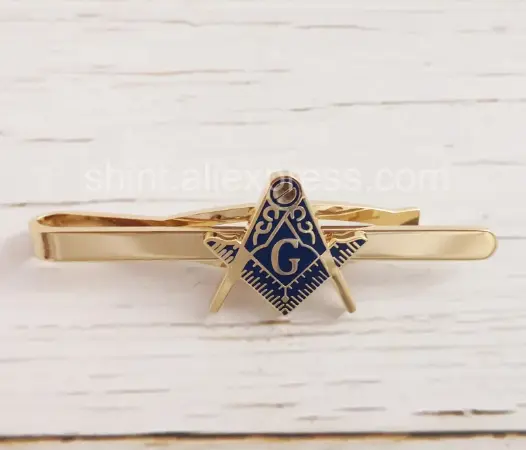
Free Mason Tie Clip Gold plated Masonic Rare
$19.99 Buy It Now 5d 1h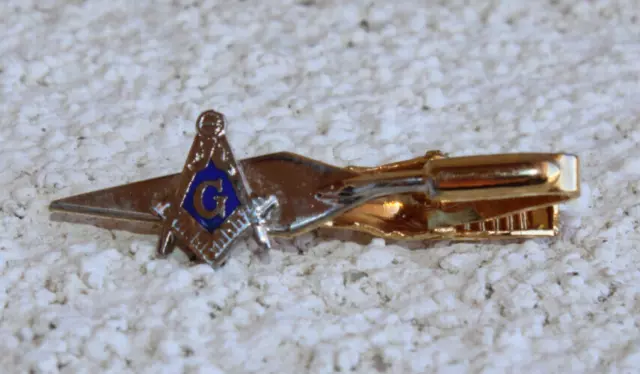
Masonic tie bar clip gold tone Freemason emblem symbol trowel
$14.97 Buy It Now 15d 8h
Genuine British Made Decorative Insignia Masonic Gold Coloured Tie Clip STD171
$12.53 Buy It Now 25d 15h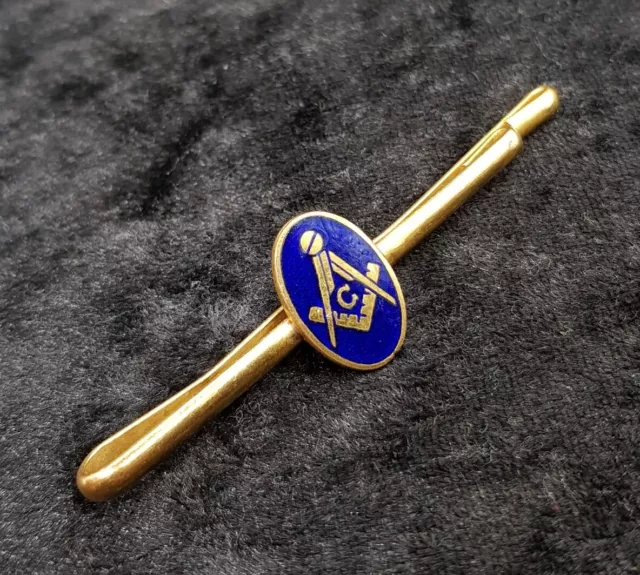
Vintage Gold Tone Blue Enamelled Masonic Tie Bar Clip - Freemasons Mason
$31.37 Buy It Now 13d 19h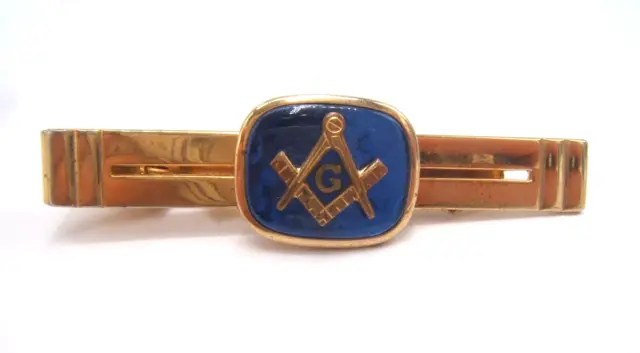
Vintage Anson Masonic Mason Tie Clip Gold Tone
$10.00 Buy It Now 13d 6h
Vintage Hickok Gold Toned Masonic / Free Mason Logo Tie Clip USA
$16.99 Buy It Now 4d 21h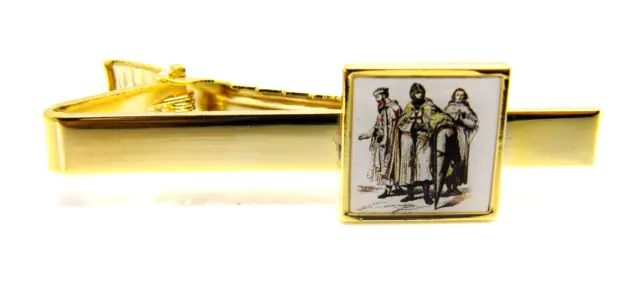
Knights Templar Mason Badge Masonic Tieclip Tie Pin Clip Gift Gold Plated
$5.01 Buy It Now 24d 14h
Mason 32 Degree Scottish Rite Shriners Vintage Tie Bar Clip Masonic 4 Symbols
$35.00 0 Bids 3d 0h
Vintage Gold Free Mason Crown Money Clip Bar Excellent Condition 1.25in Masonic
$14.99 Buy It Now 4d 5h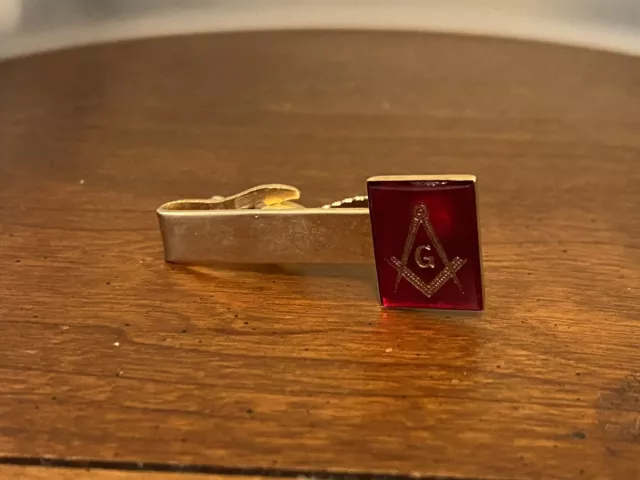
Vintage Hayward Freemason Masonic Red Stone Goldtone Tie Clip Mason Estate
$13.00 Buy It Now 24d 1h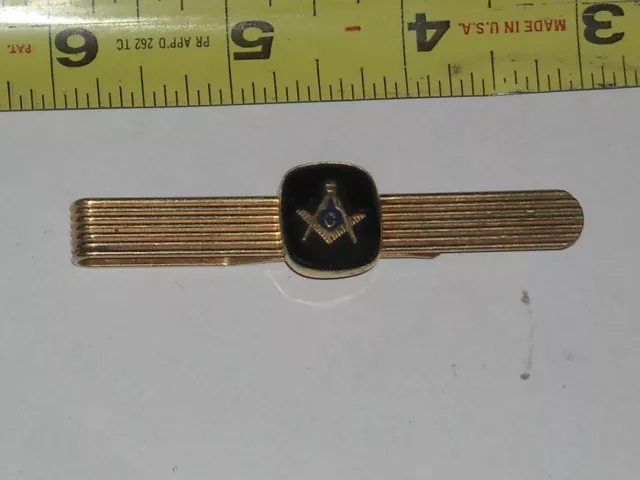
1/20 12K GF Gold Filled Vintage Masonic Masons Tie Bar Clip
$15.99 Buy It Now 16d 0h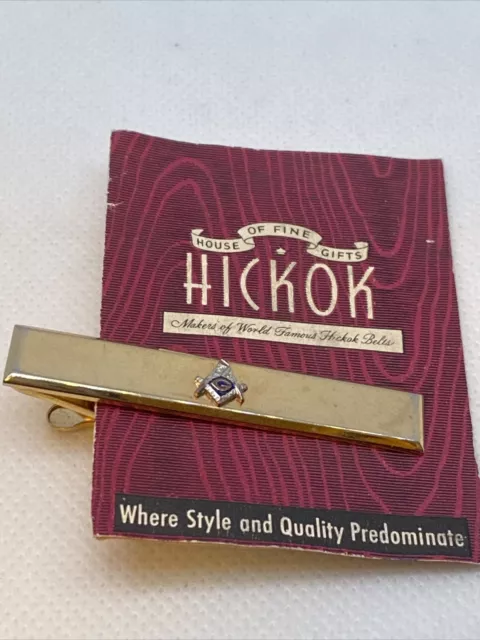
Tie Clip Bar Masonic Free Mason HICKOK USA Includes Pamphlet From Hickok B1B
$19.99 Buy It Now 1d 17h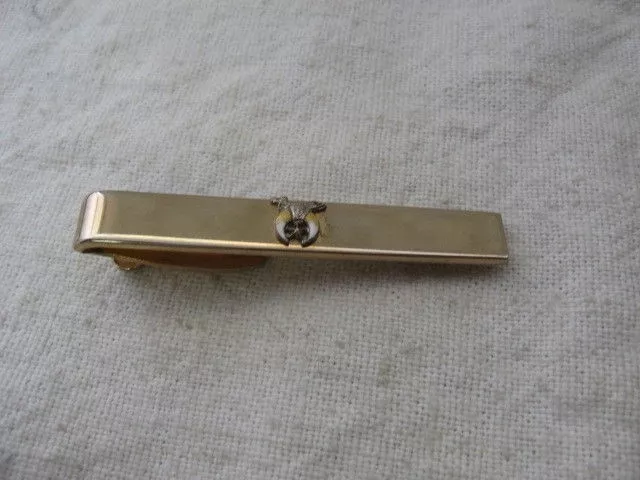
Vintage Tie Bar Clip: Mason Masonic MYSTIC SHRINE SYMBOL Gold Tone
$17.99 Buy It Now 21d 4h
Mystic Shriner Mason Masonic Scimitar Star Horns Men's Tie Tack Lapel Pin ~
$9.99 Buy It Now 26d 8h
Masonic Antique Vintage Tie Bar Clip mason scottish rite shriners
$27.49 Buy It Now 12d 23h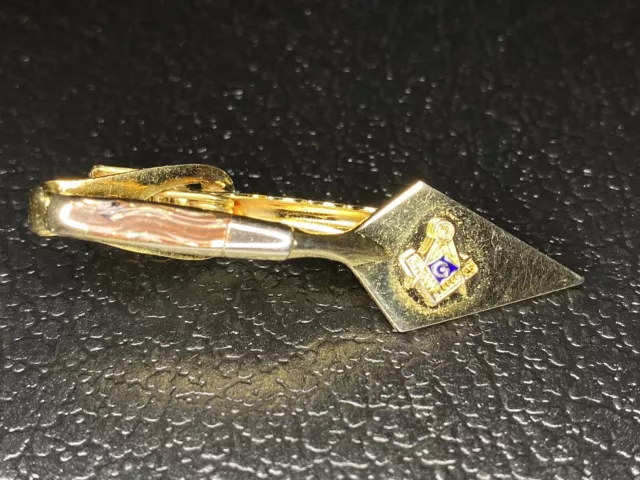
Vintage Masons Goldtone Tie Clip Mason Symbol and Mortar Shovel Tool
$22.00 Buy It Now 8d 5h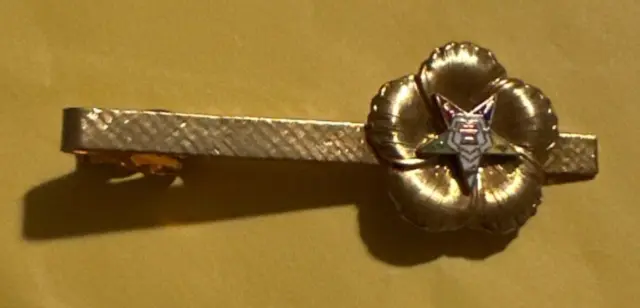
Unique Vintage Mason Masonic Tie Bar Clip Order of Eastern Star Gold Tone
$25.00 Buy It Now 19d 21h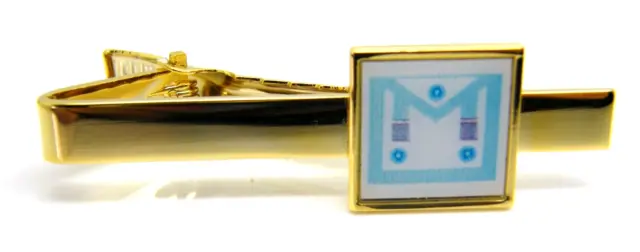
Craft Master Mason Apron Masonic Tieclip Tie Pin Clip Gift Gold Plated
$5.01 Buy It Now 3d 19h
Triple Tau Royal Arch Mason Badge Masonic Tieclip Tie Pin Clip Gift Gold Plated
$5.01 Buy It Now 16h 7m
Vintage SWANK MASONIC Masons Pendant Link CHAIN TIE BAR
$11.95 Buy It Now 13d 3h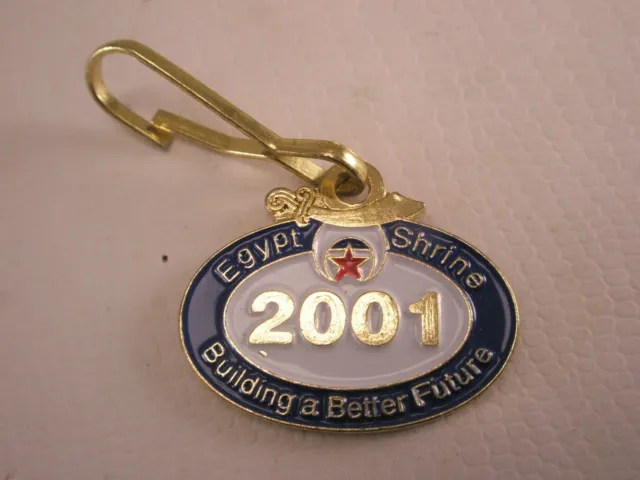
2001 Shriner's Egypt Temple Vintage Medallion Key Fob masons masonic
$17.49 Buy It Now 8d 11h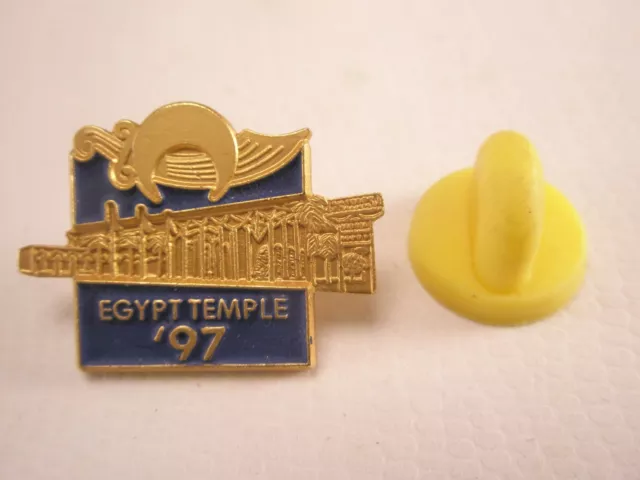
1997 Shriner's Egypt Temple Vintage Lapel Pin/Tie Tack masons masonic
$20.49 Buy It Now 18d 18h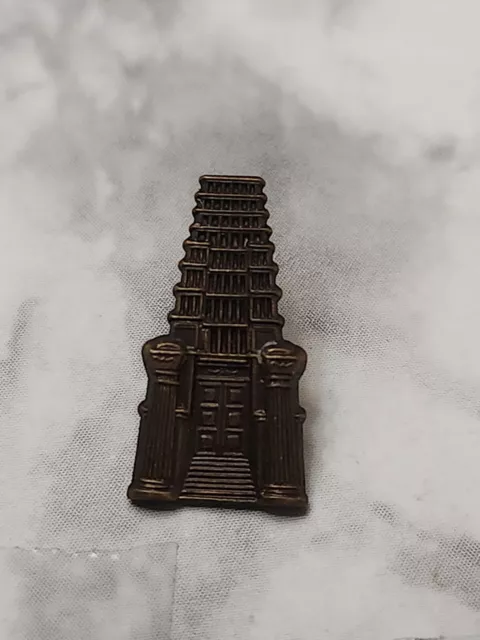
Mason Masonic Temple Grand Lodge Of Pennsylvania Vintage Tie Tack Lapel Pin
$19.49 Buy It Now 29d 16h
Vintage Silvertone STAR Free Mason masonic Tie Bar Clasp Clip
$9.59 Buy It Now 1d 3h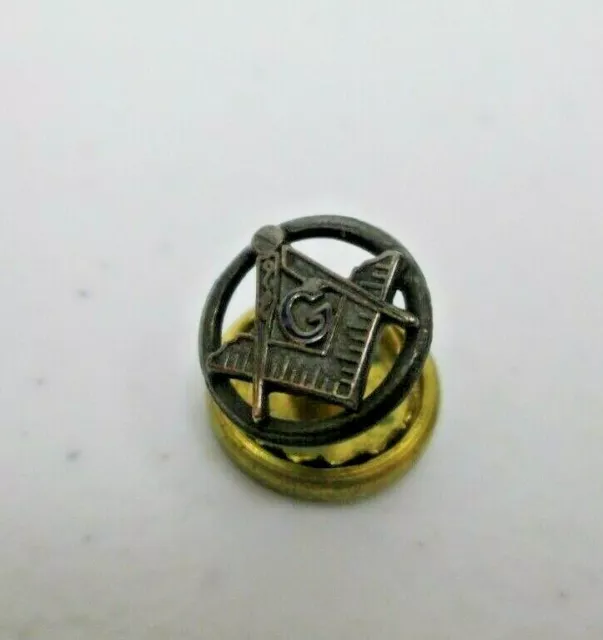
Vintage Tie Tack ? G Compass Lodge Masonic Fraternity Free Mason Silver Tone
$17.95 Buy It Now 18d 2h
Vintage Mason Masonic Freemason Belt Buckle Compass Square No G and pins
$13.49 Buy It Now 28d 22h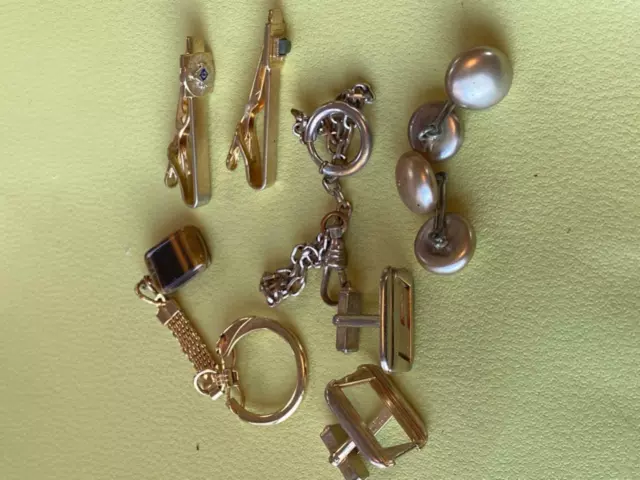
Vtg Small Lot Of Men's Tie Bars, Buttons, Masonic, Mason Et. Al
$12.99 Buy It Now 5d 0h
Masonic Trowel Vintage ANSON Tie Bar Clip mason tools shriners scottish rite
$27.49 Buy It Now 24d 14h
Masonic Tie Bar Gold Chain Signet Vintage Free Masons Jewelry - LOOK
$16.89 Buy It Now 25d 1h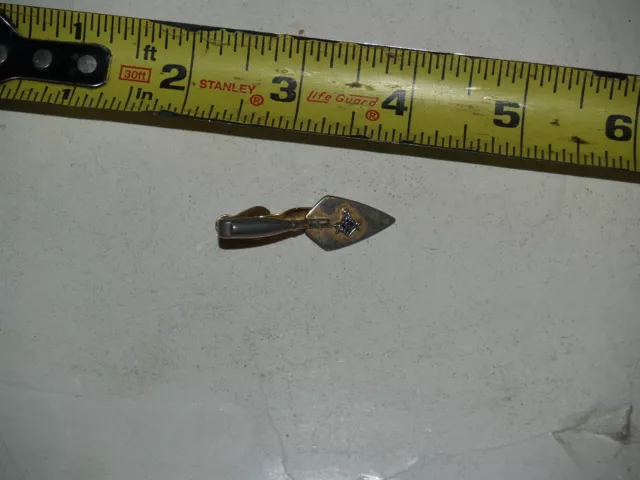
Tie Clip Aligator clip -Gold Toned Trowel tool with Mason Symbol
$12.99 Buy It Now 28d 4h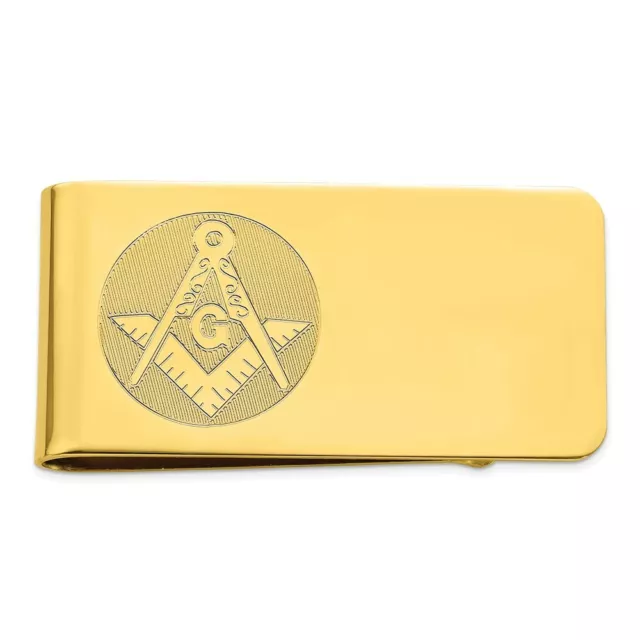 1 watcher
1 watcher Gold-plated Kelly Waters Masonic Money Clip$120.31 Buy It Now
Gold-plated Kelly Waters Masonic Money Clip$120.31 Buy It Now
New Gold Plated Money Clip Boxed Mason Masonic New
$31.38 Buy It Now
 Gold-plated Kelly Waters Masonic Money Clip$143.51 Buy It Now
Gold-plated Kelly Waters Masonic Money Clip$143.51 Buy It Now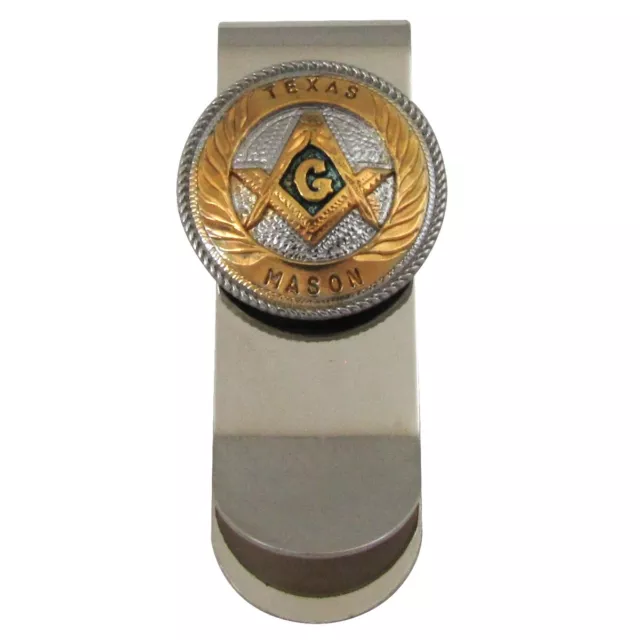 3 watchers
3 watchers Gold Texas Mason TX Money Clip Mens Credit Card Holder Men's Wallet Masonic Gift$22.56 Buy It Now
Gold Texas Mason TX Money Clip Mens Credit Card Holder Men's Wallet Masonic Gift$22.56 Buy It Now
 Vintage A & Z 12K Gold Filled Tie Bar Money Clip Masonic Emblem$34.19 Buy It Now or Best Offer
Vintage A & Z 12K Gold Filled Tie Bar Money Clip Masonic Emblem$34.19 Buy It Now or Best Offer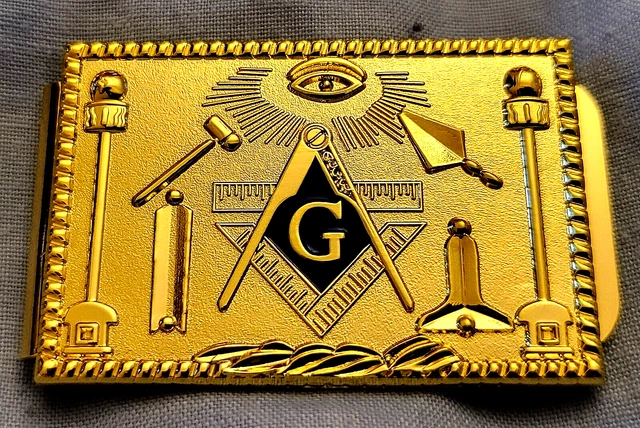 17 watchers
17 watchers Masonic Gold Money Clip Freemason Vintage Lodge Regalia Eye Secret Society Notes$60.07 10 Bids 1d 0h
Masonic Gold Money Clip Freemason Vintage Lodge Regalia Eye Secret Society Notes$60.07 10 Bids 1d 0h
Mason Freemason Money Clip, Money Bar Masonic Gold-tone Square and Compass (E)
$20.51 Buy It Now or Best Offer 4 watchers
4 watchersMason Freemason Money Clip, Money Bar Masonic Gold-tone Square and Compass (D)
$20.51 Buy It Now or Best Offer 1 watcher
1 watcherMason Freemason Money Clip, Money Bar Masonic Gold-tone Square and Compass (C)
$20.51 Buy It Now or Best Offer 2 watchers
2 watchersMason Freemason Money Clip, Money Bar Masonic Gold-tone 47th Euclid (B)
$20.51 Buy It Now or Best Offer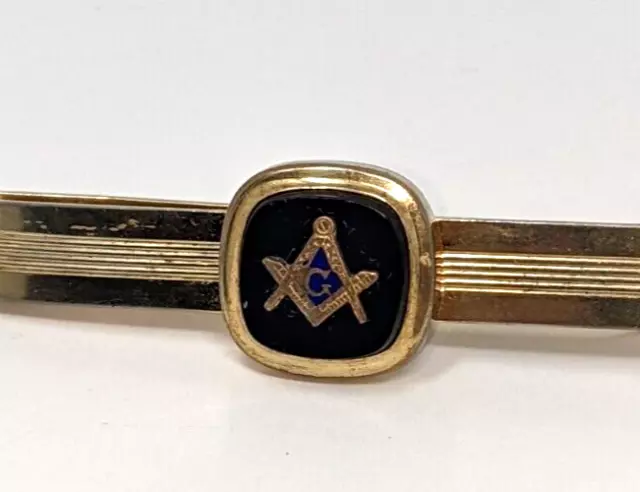
 Vintage Freemason Money Clip Gold Tone w/ Black Onyx Blue enamel "G" compass$17.74 Buy It Now or Best Offer
Vintage Freemason Money Clip Gold Tone w/ Black Onyx Blue enamel "G" compass$17.74 Buy It Now or Best Offer 1 watcher
1 watcherMason Freemason Money Clip, Money Bar Masonic Gold-tone Square and Compass (A)
$20.51 Buy It Now or Best Offer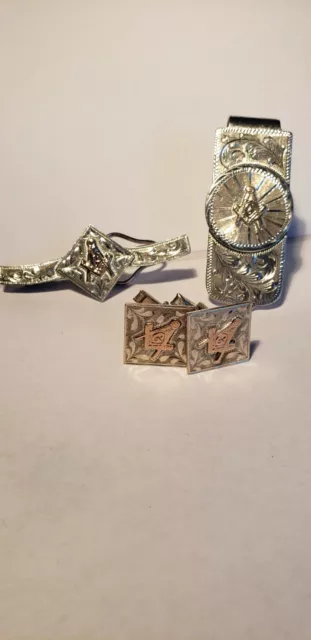 2 watchers
2 watchersMasonic Vintage 925 Sterling Silver And 10K Rose Gold Money Clip Set
$957.56 Buy It Now
14K. SOLID GOLD NECKLACE WITH NATURAL CITRINES (White Gold)
$993.82 Buy It Now or Best Offer
18K. SOLID GOLD NECKLACE WITH NATURAL CITRINES (White Gold)
$844.75 Buy It Now or Best Offer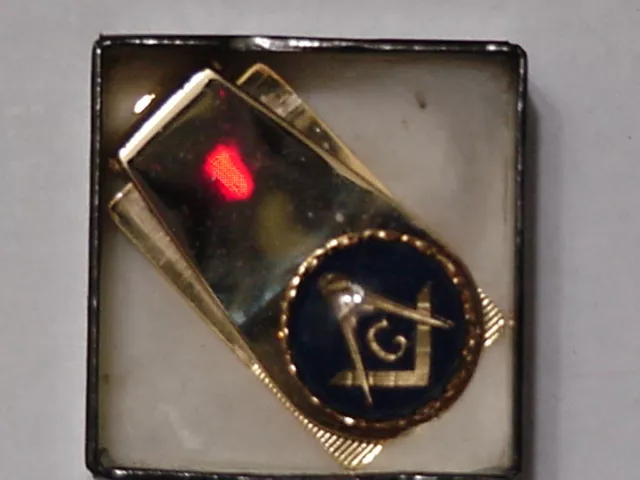 4 watchers
4 watchersMasonic Money Clip made for the Genesis Lodge 803 64-65, Heavily Gold Plated
$19.15 Buy It Now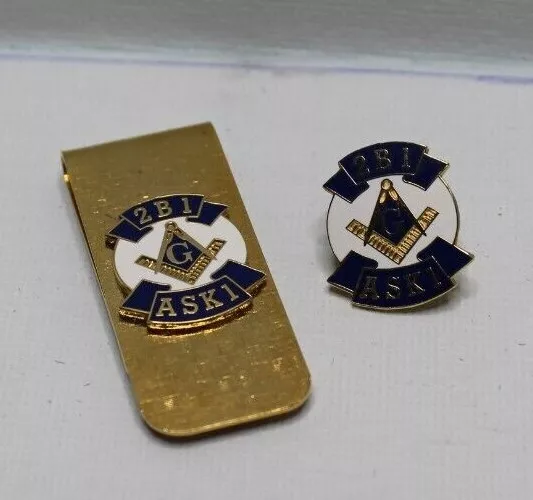 2 watchers
2 watchers Masonic Freemason 2-B-1 Ask-1 Money Clip & Matching Lapel Pin Tie Pin Gold Tone$7.52 Buy It Now
Masonic Freemason 2-B-1 Ask-1 Money Clip & Matching Lapel Pin Tie Pin Gold Tone$7.52 Buy It Now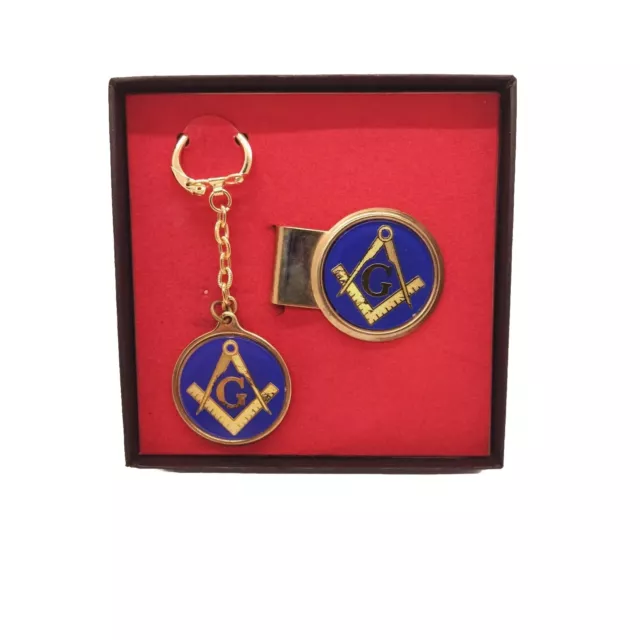
 Freemason Vintage Money Clip & Key Chain Set Masonic Square & Compass Blue/Gold$37.62 Buy It Now or Best Offer
Freemason Vintage Money Clip & Key Chain Set Masonic Square & Compass Blue/Gold$37.62 Buy It Now or Best Offer
Vintage Masonic Gold Tone w/ Black Onyx Tie / Collar / Money Clip Flex-Let
$30.03 Buy It Now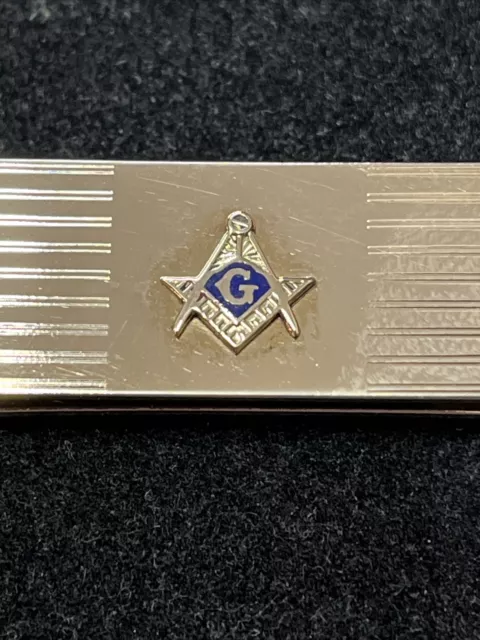
12k Gold Filled Masonic Money Clip
$54.65 Buy It Now
Vintage Gold Tone Money Clip
$20.51 Buy It Now
14K. SOLID GOLD NECKLACE WITH NATURAL WHITE TOPAZ (Rose Gold)
$880.95 Buy It Now or Best Offer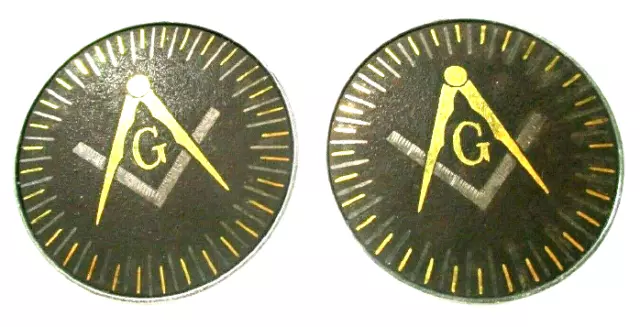 2 watchers
2 watchers Cufflinks Masonic Compass Sterling Silver Freemason Japan Vintage Mens Jewelry
Cufflinks Masonic Compass Sterling Silver Freemason Japan Vintage Mens Jewelry$102.60$92.34 Buy It Now or Best Offer
